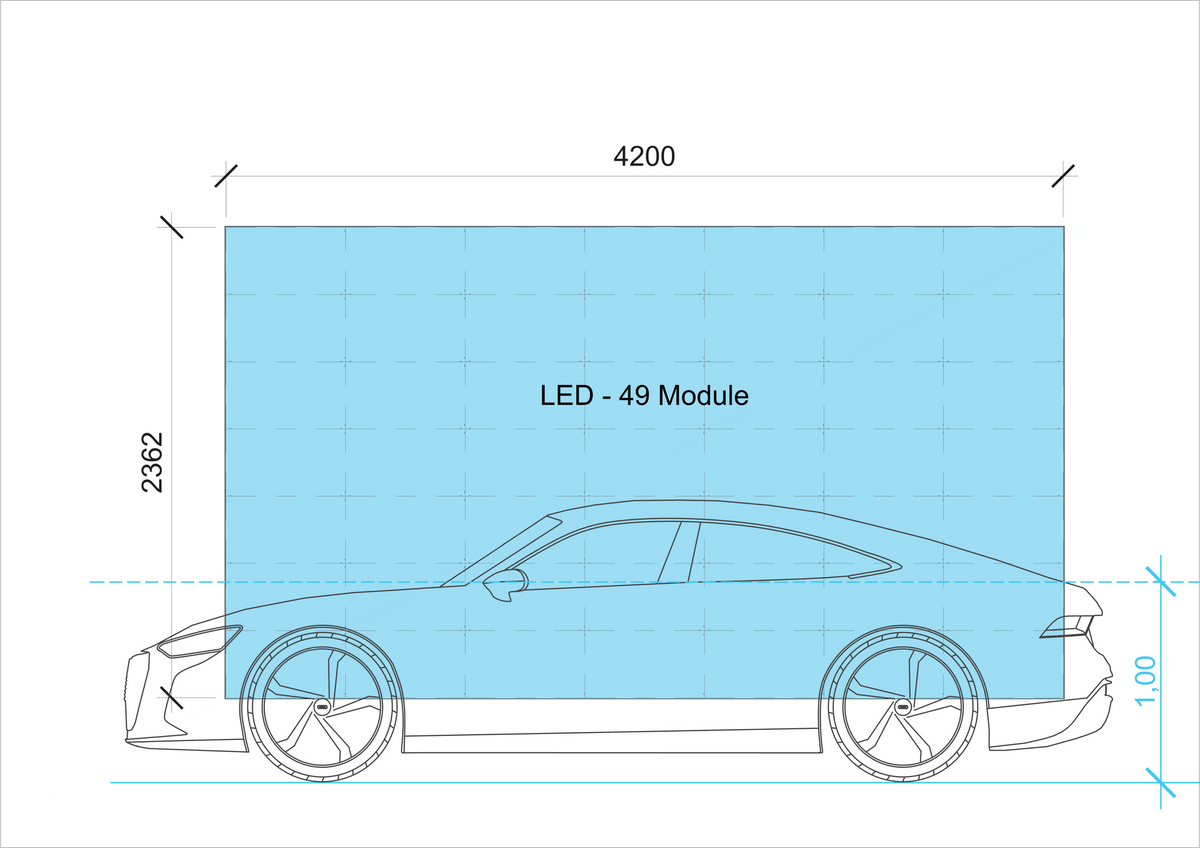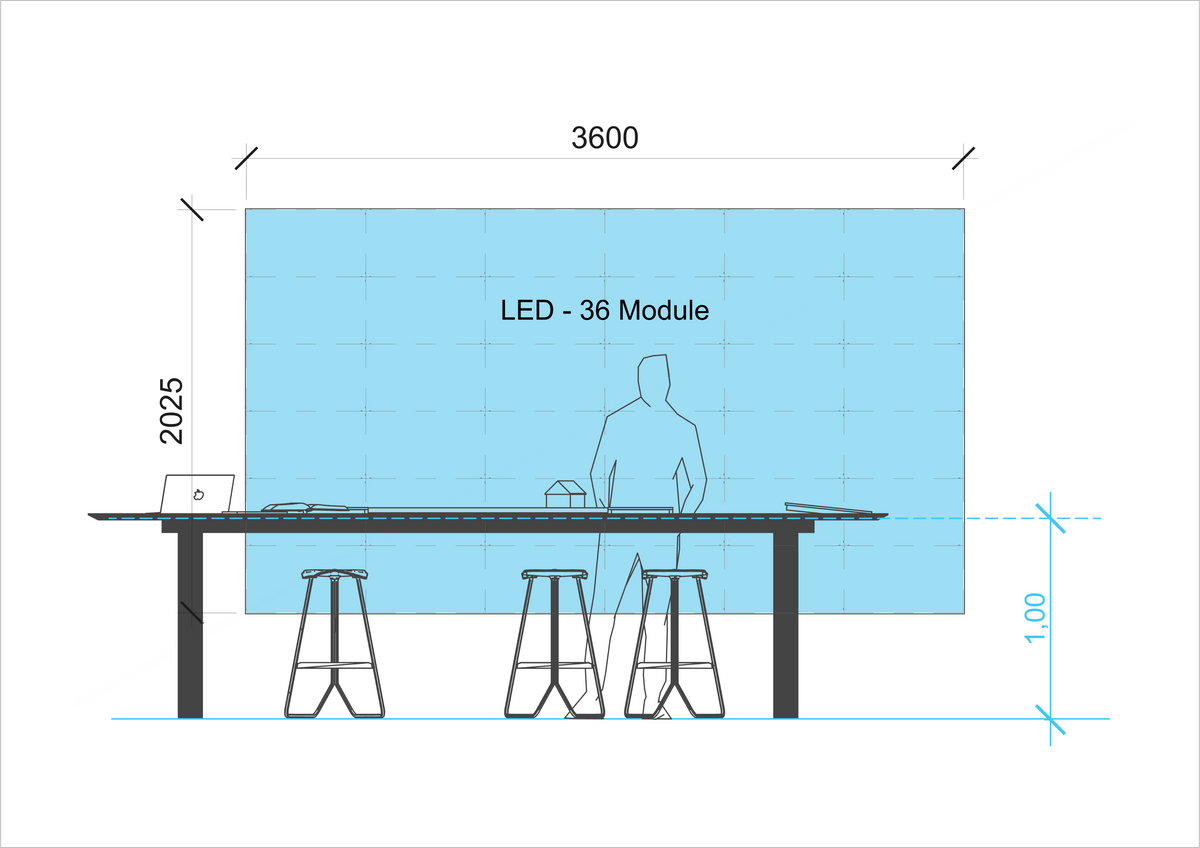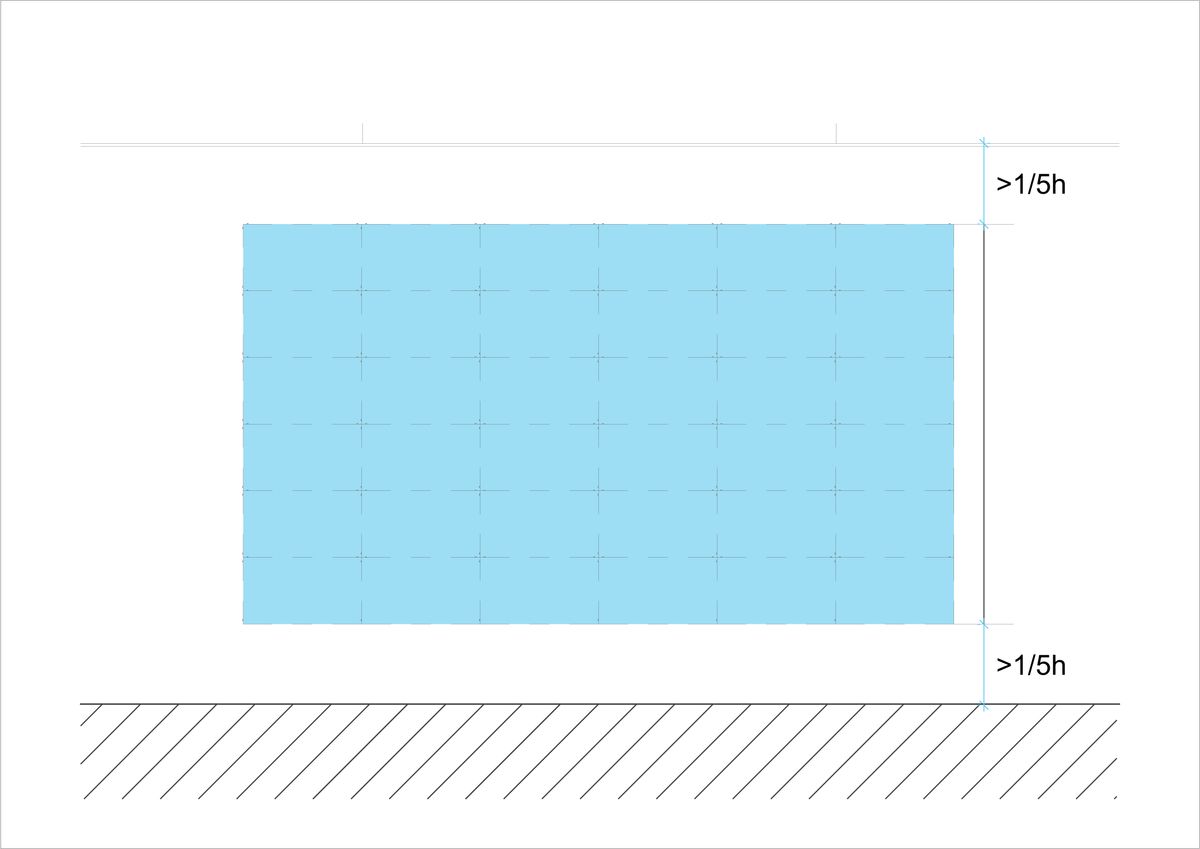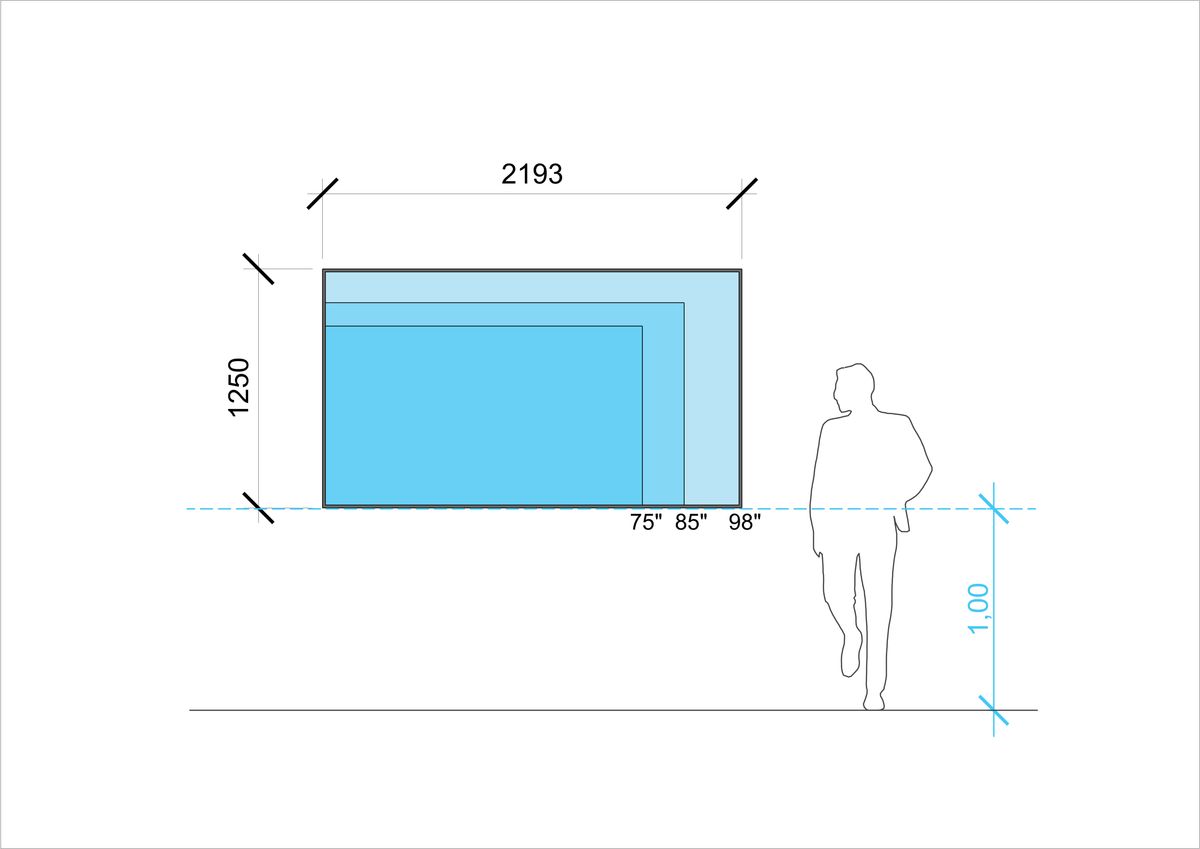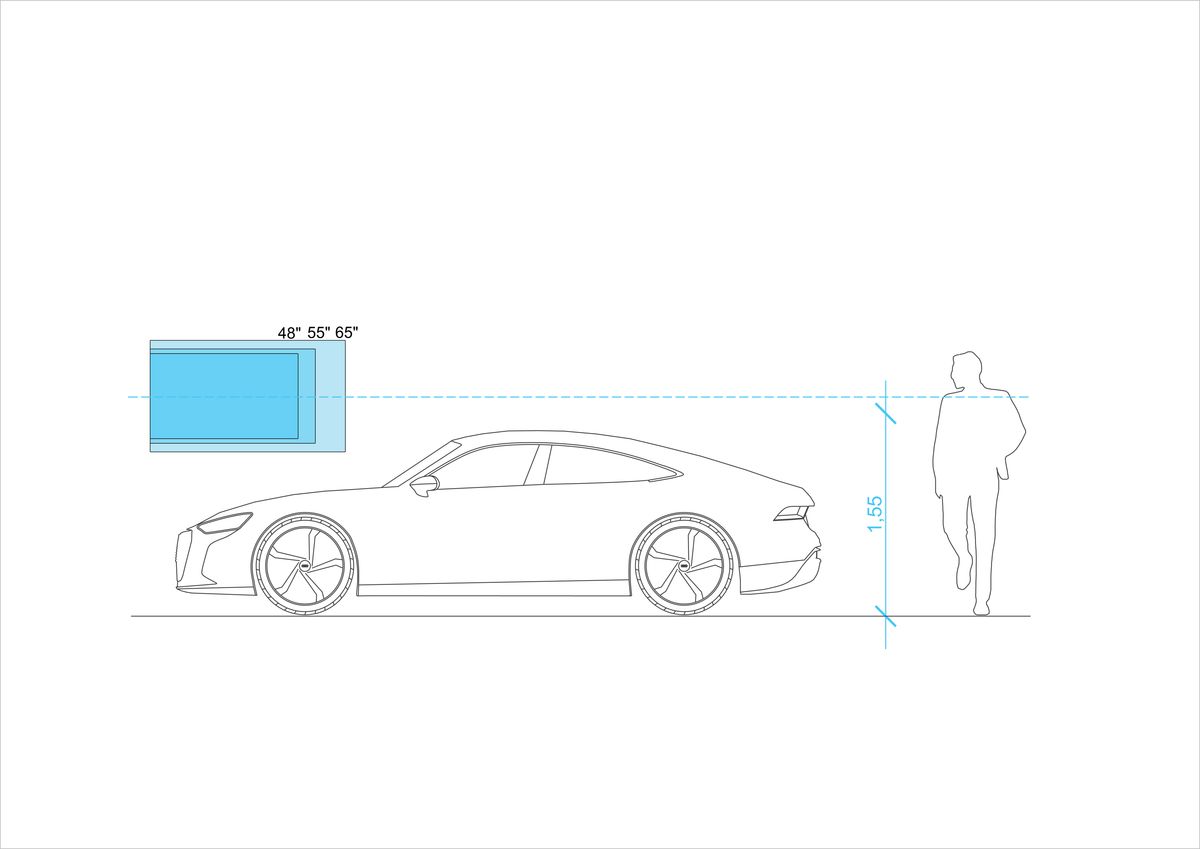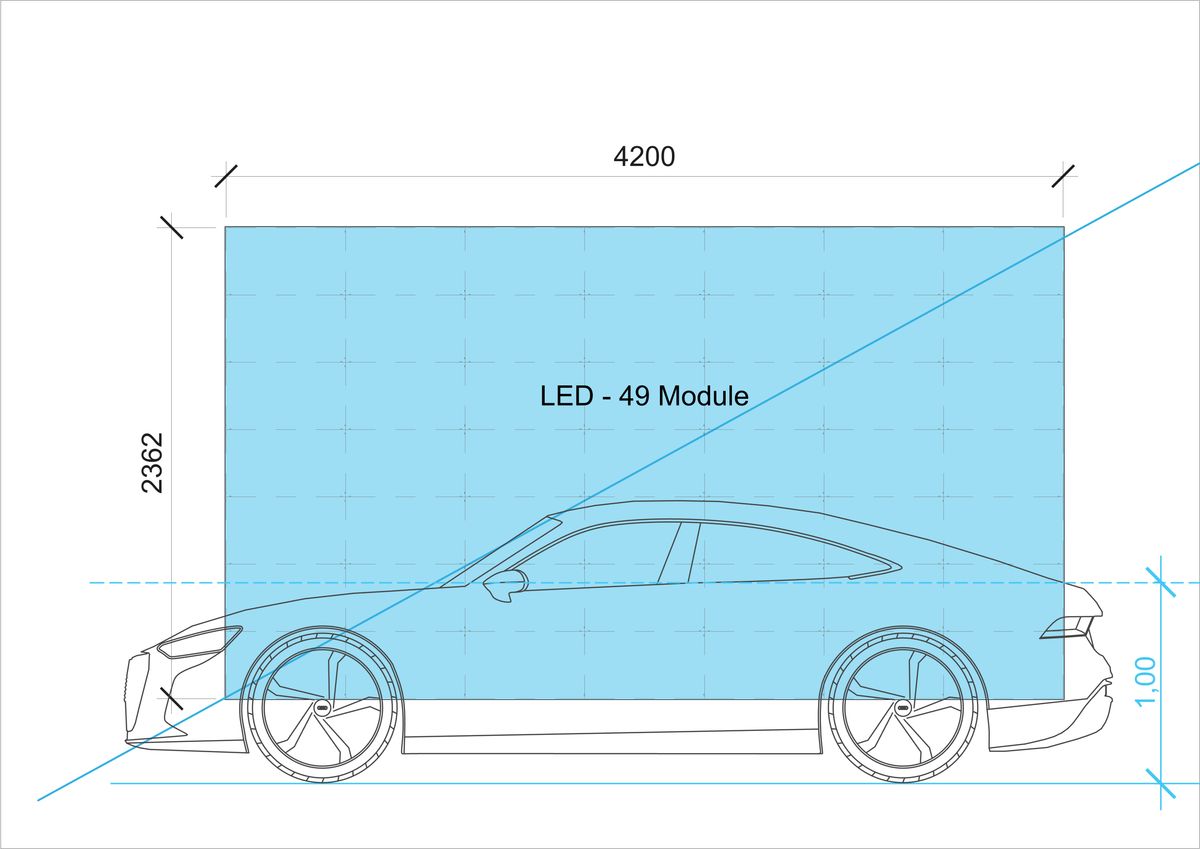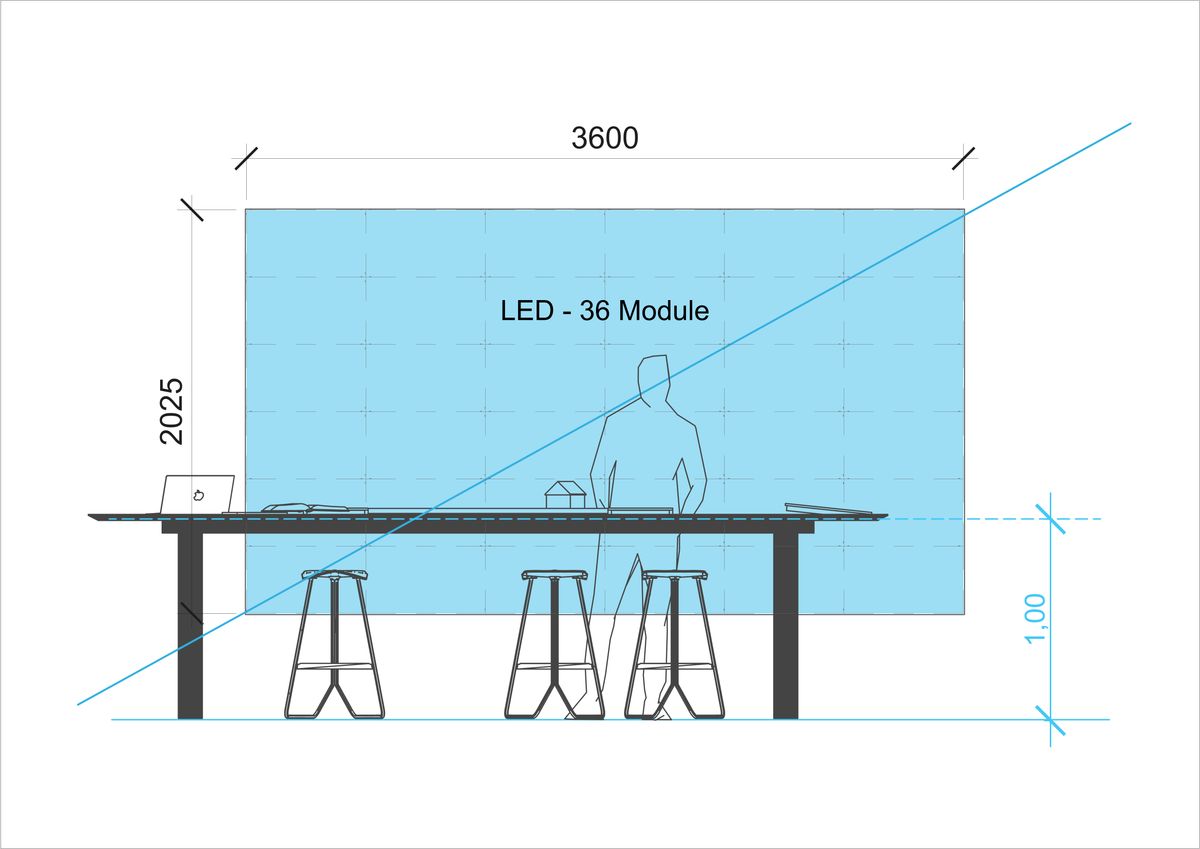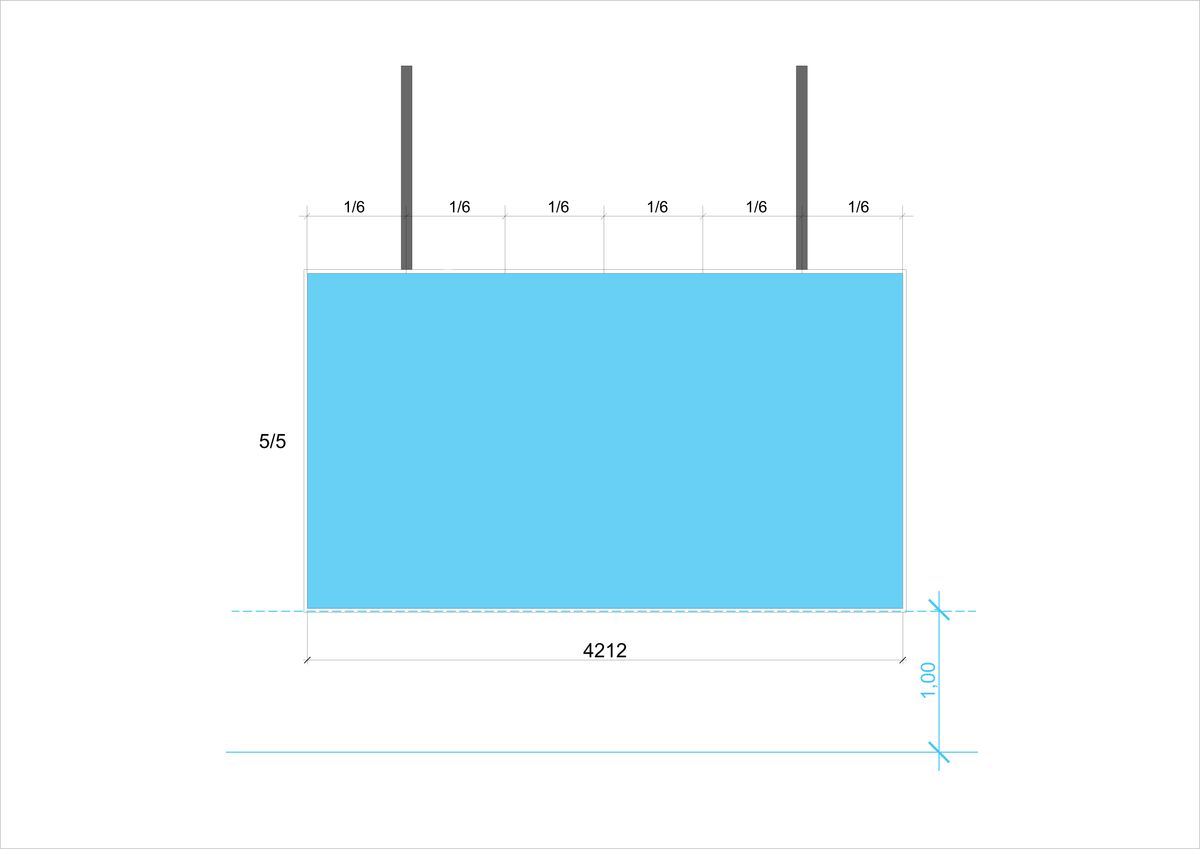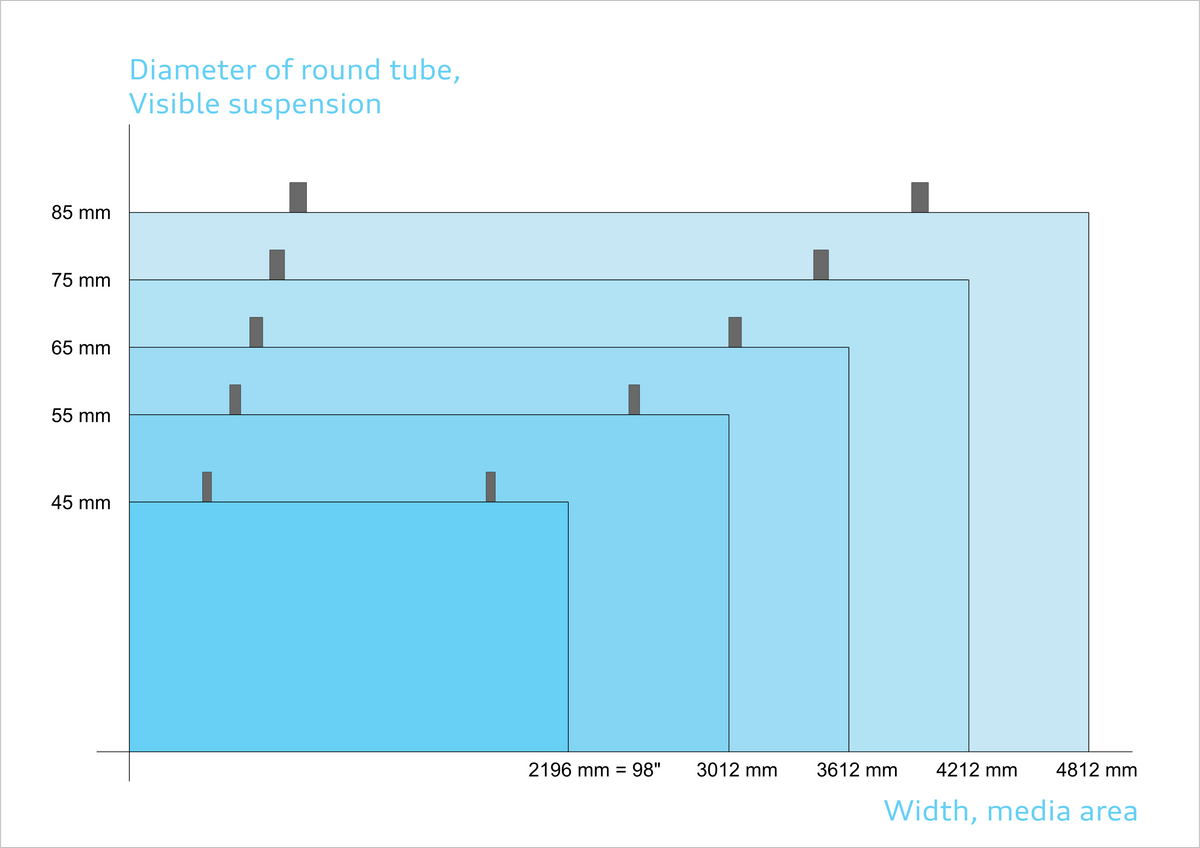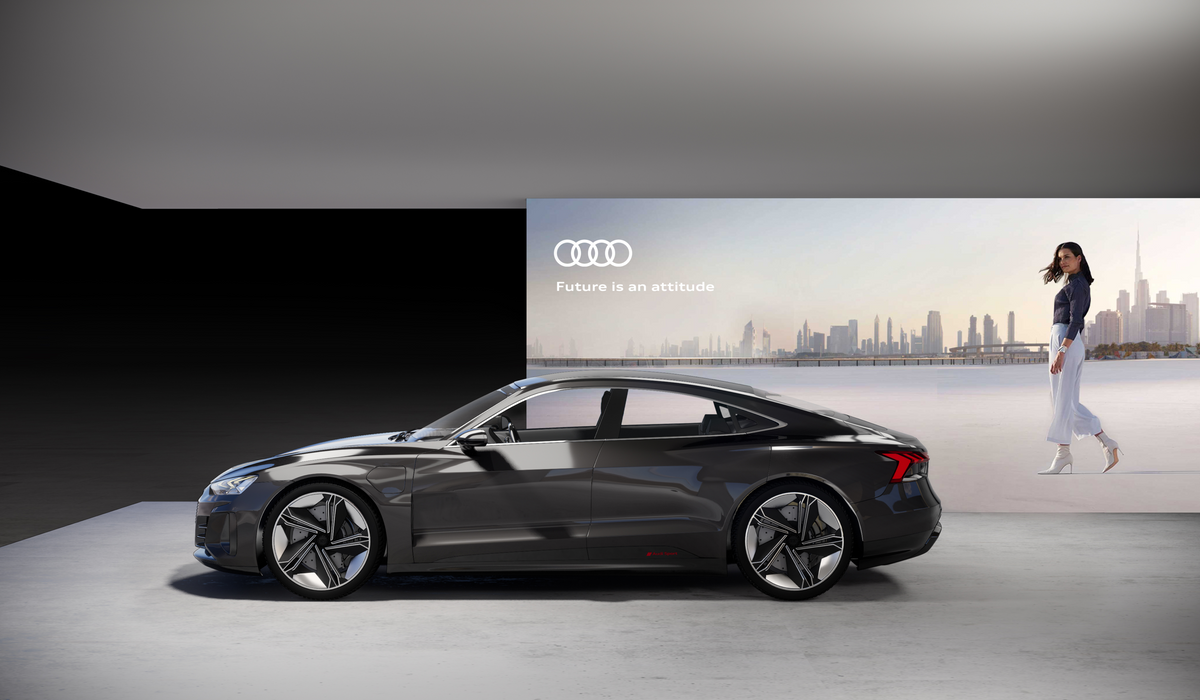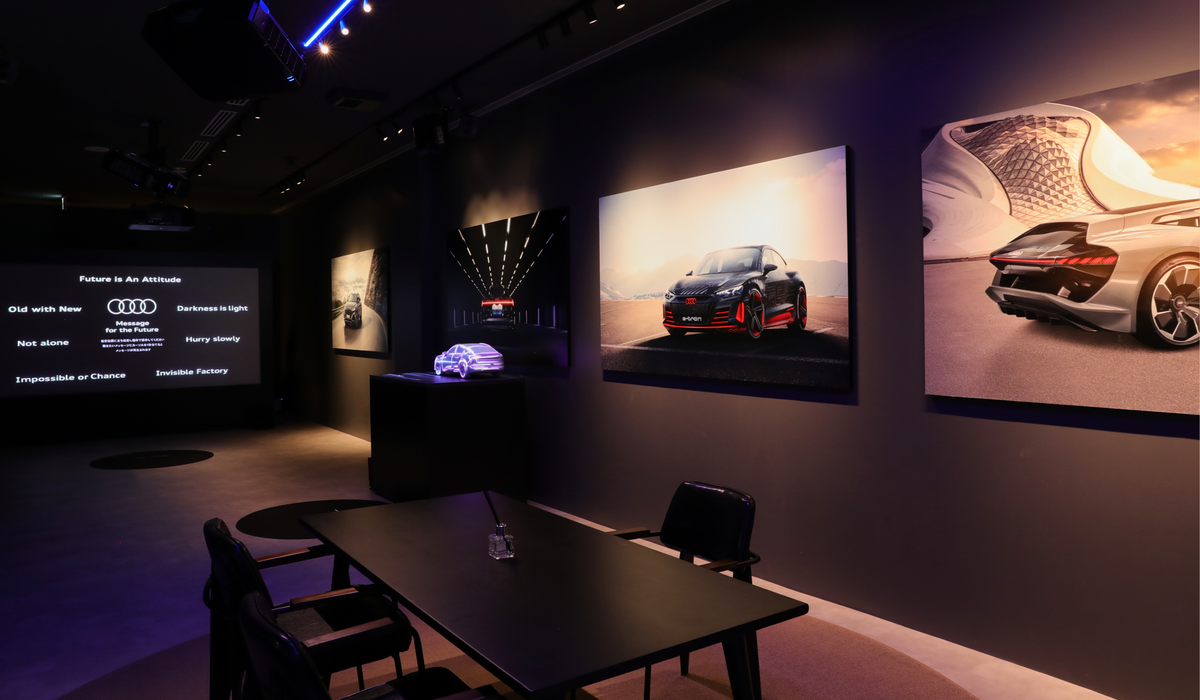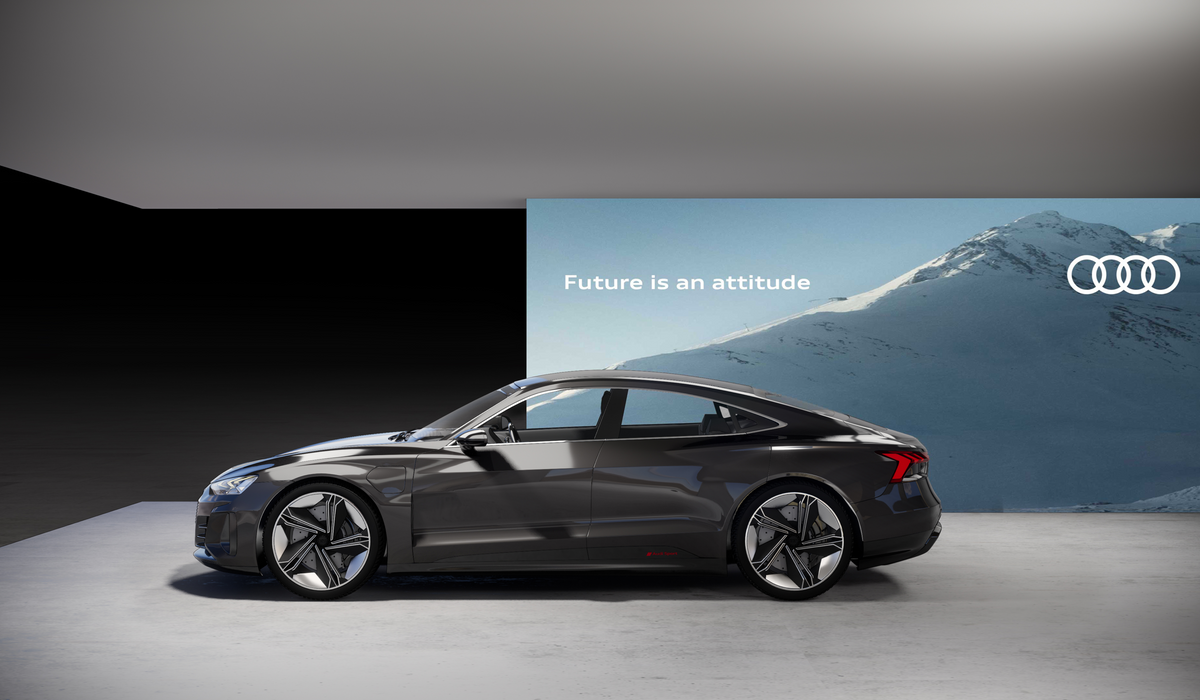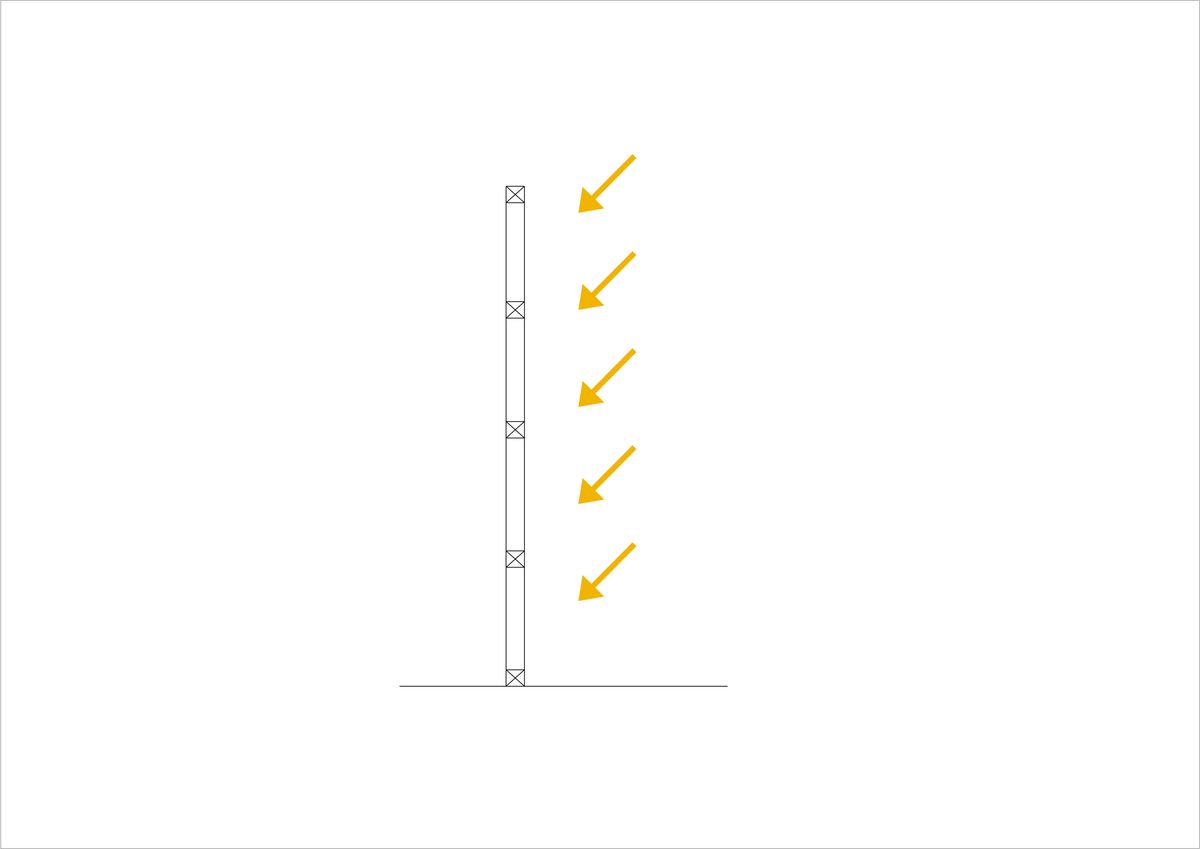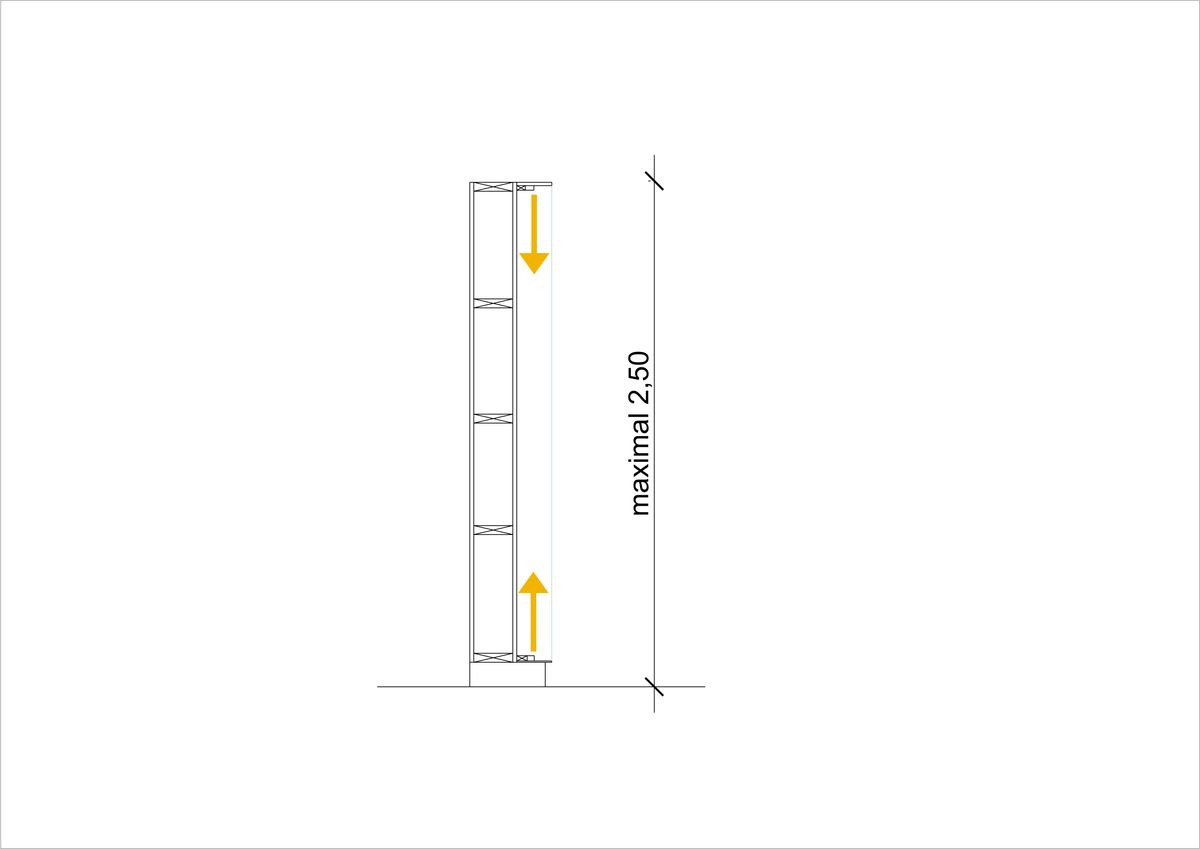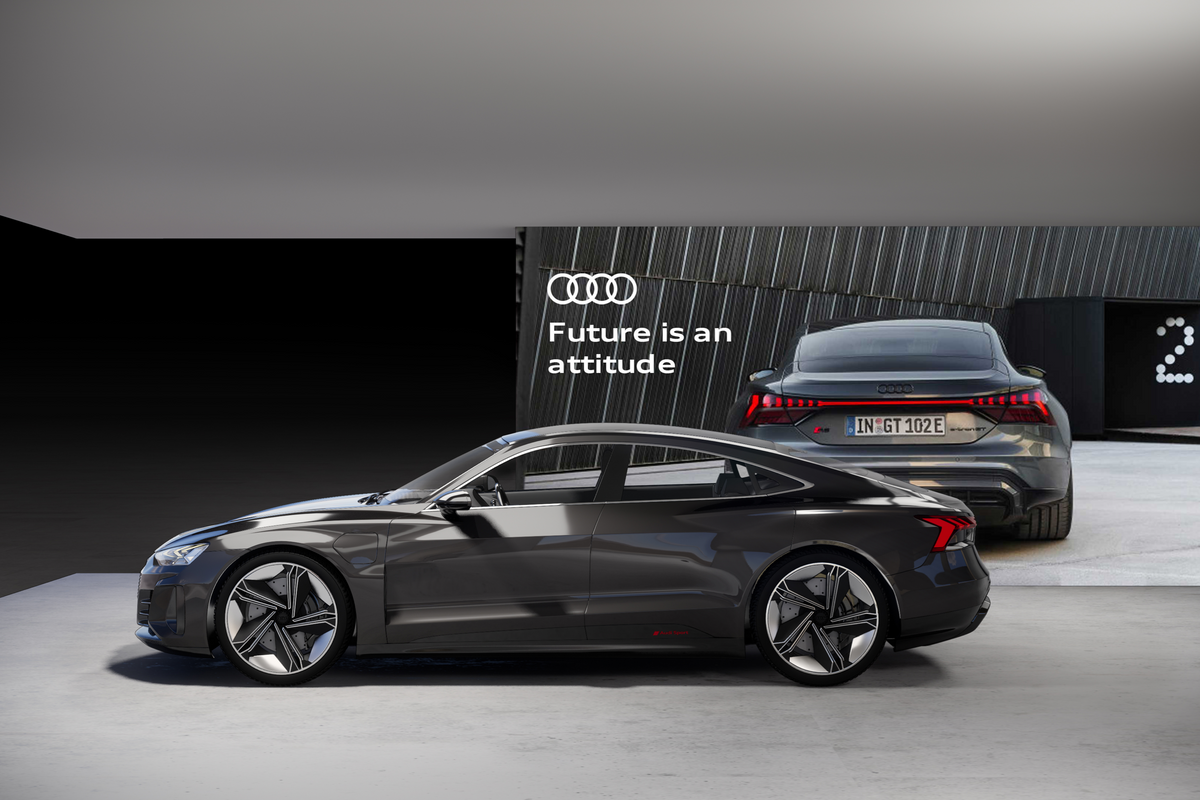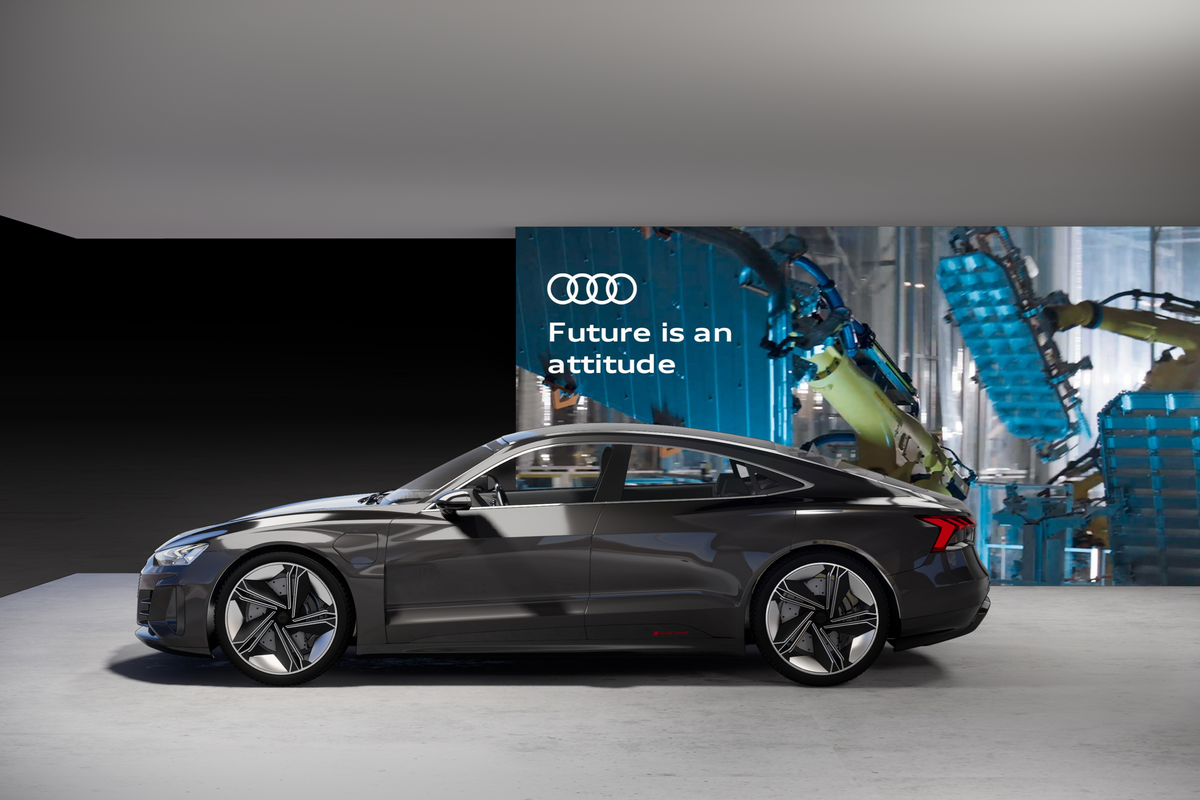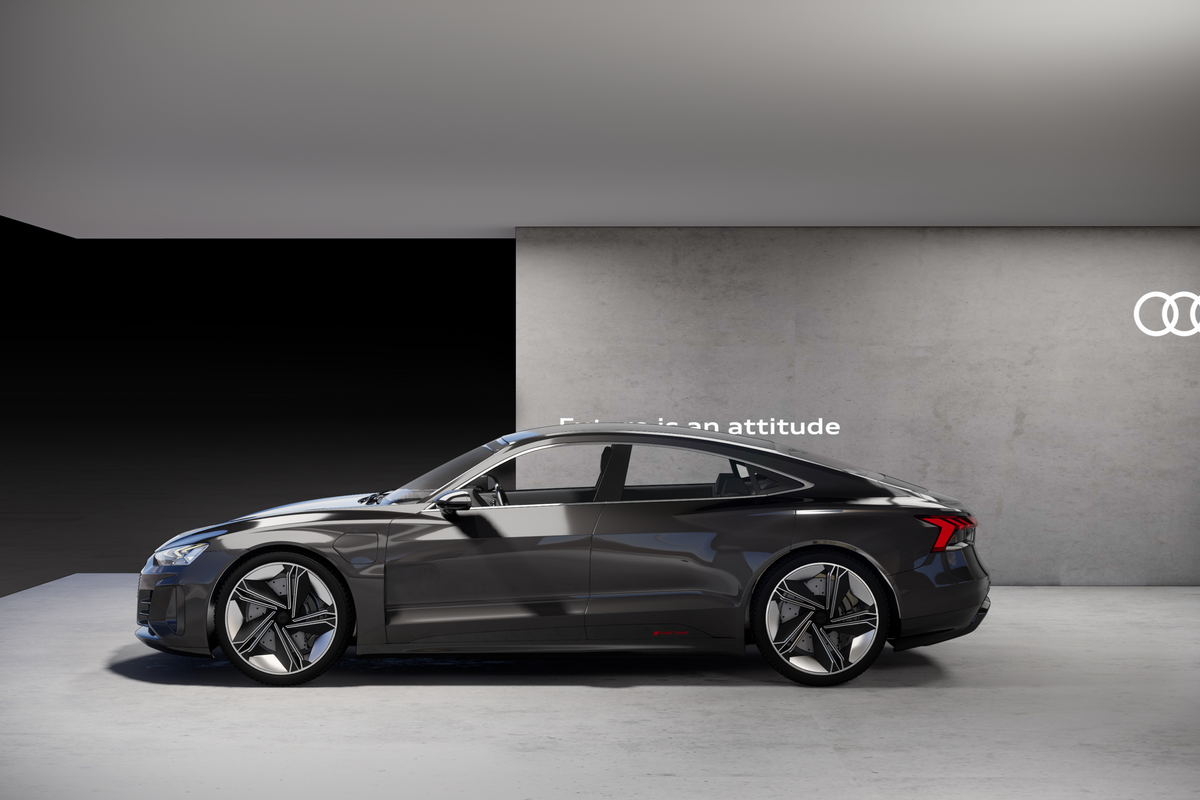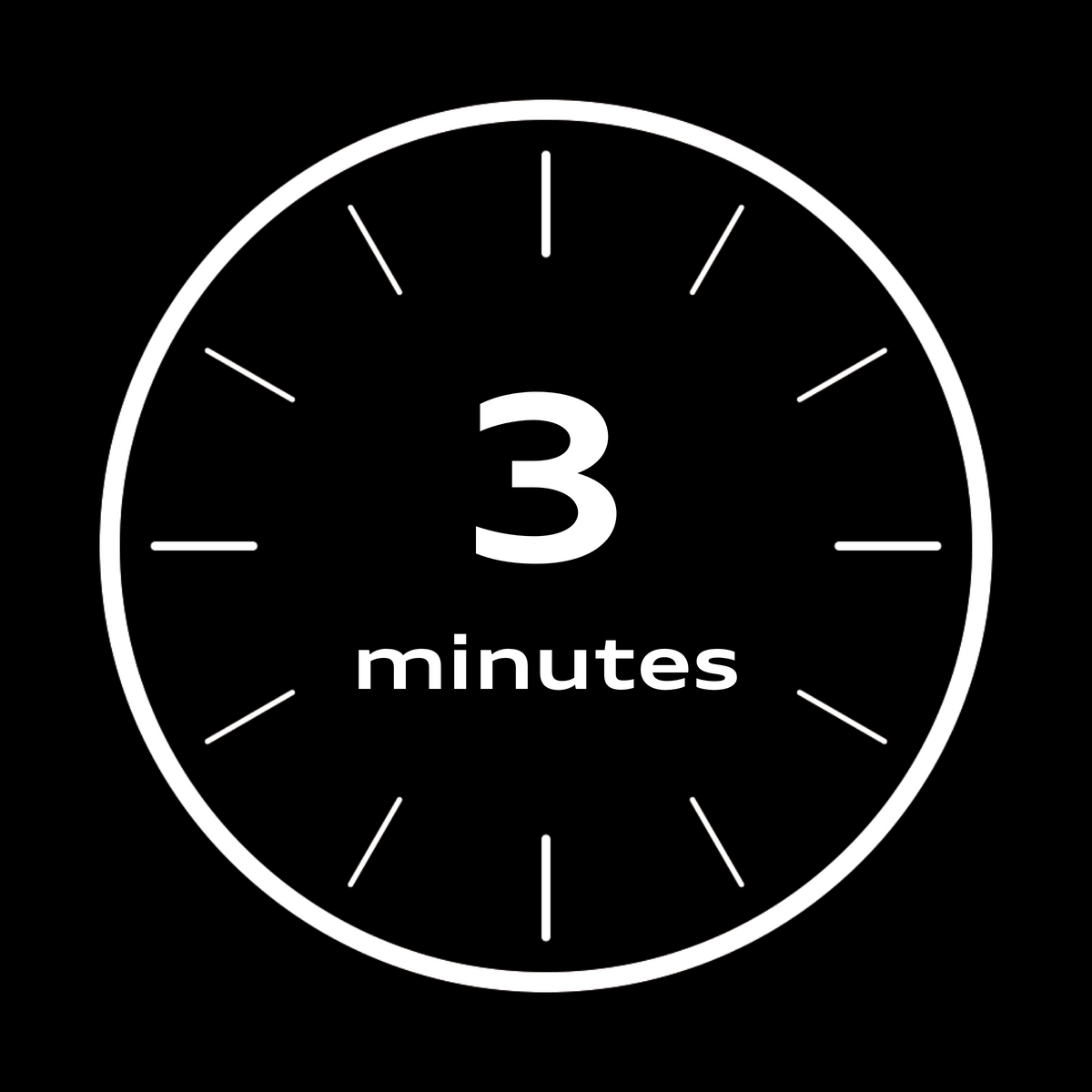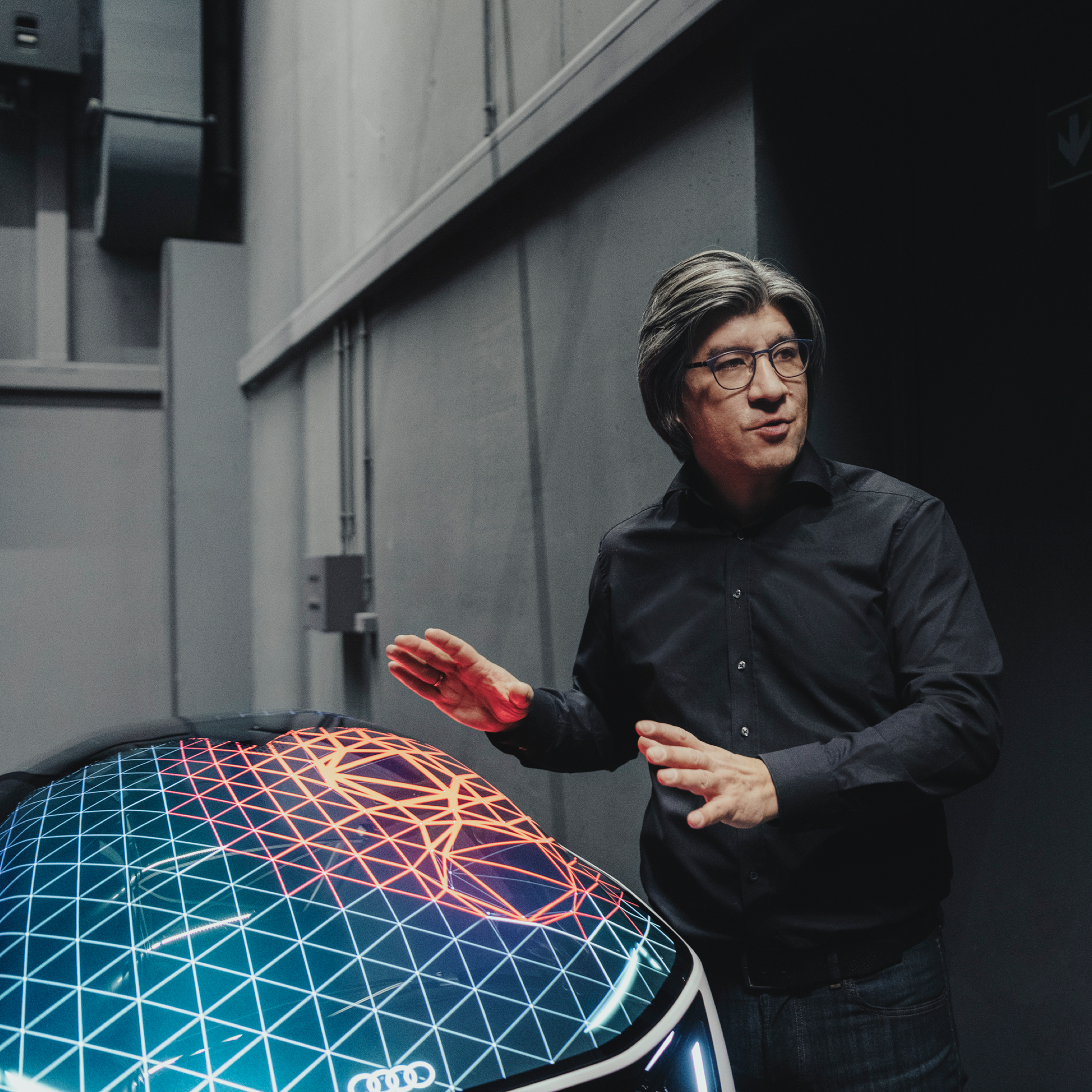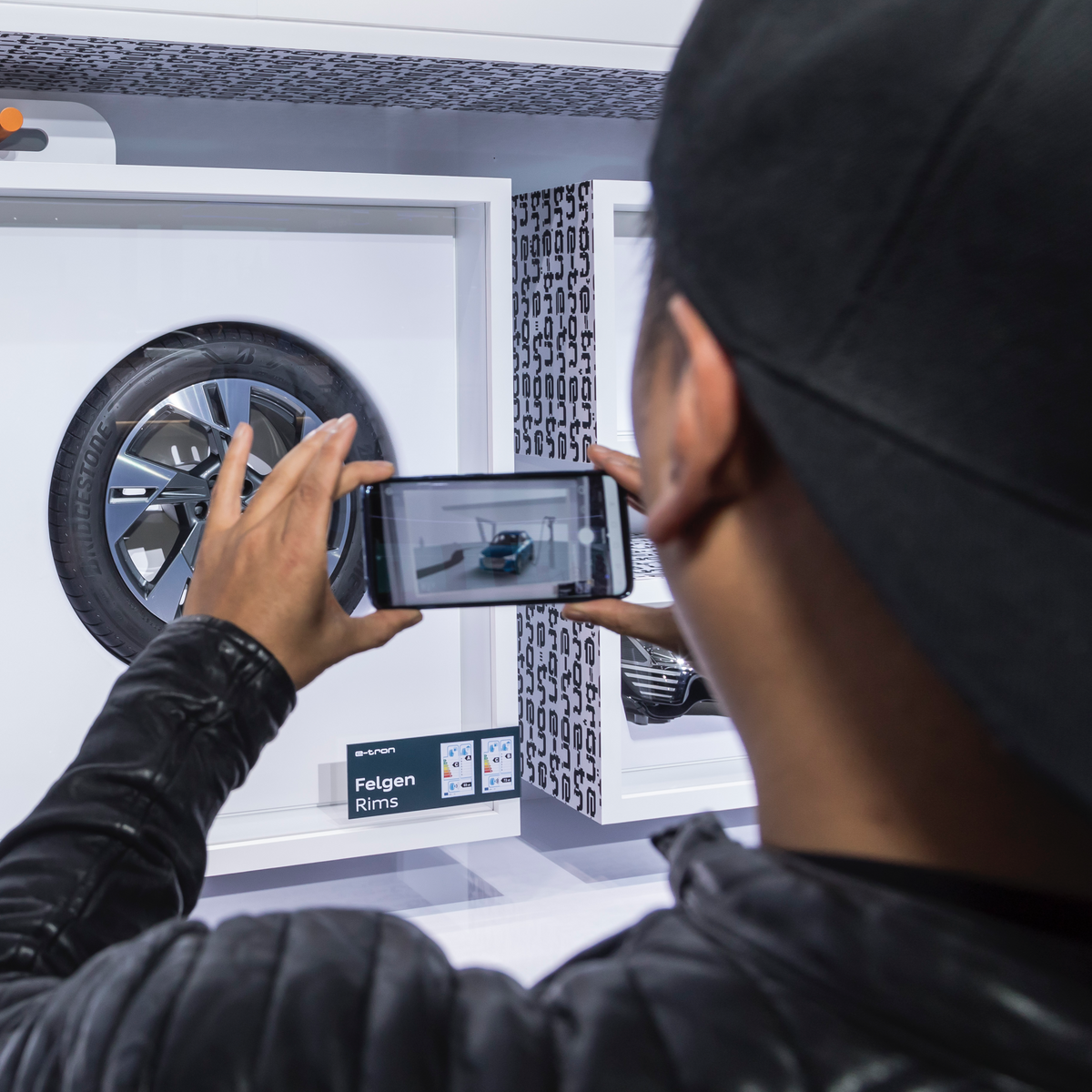
Communication
Rings
»Sophisticated, inspiring and confident, the Audi brand identity has been carefully put together – down to the last detail. The rings are characterised by their precision and graphic appeal and are only used in the most prominent places.«
Our strong identity creates brand recognition in space. In order to ensure the Audi rings are used optimally, their size and construction should be based on the environment around them. It is important to note that the rings are subject to strictly specified corporate identity guidelines that must be adhered to.
Use
The Audi rings are always presented in a reduced form and tailored to their setting. They define the brand in space, provide orientation and attract attention.
The rings can serve both as signage and as part of the content itself. In either case, attention must be paid to ensuring the ring’s composition, precision and high-end qualities are exquisitely preserved. Overbranding through the use of multiple logos is to be avoided.
The use of the rings is subject to general corporate identity guidelines: Basics > the rings
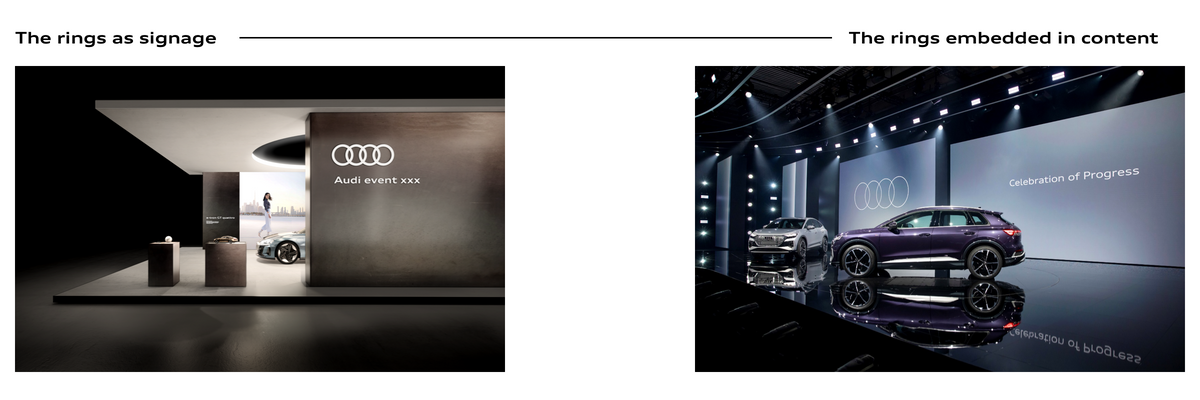
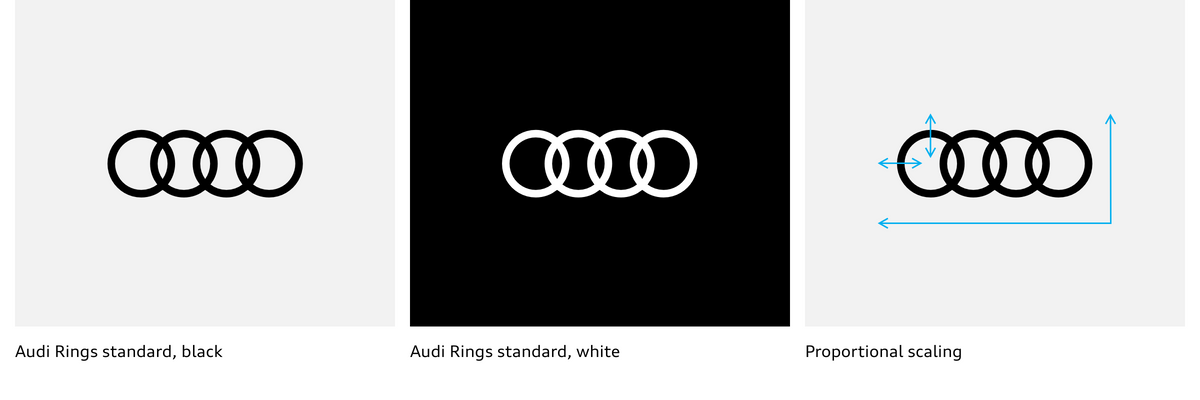
Spacing
When the rings are used as signage, standard spacing must always be observed: 1.5 ring heights to the top and 1 ring height to the right and left. They should be placed in the upper right or upper left area.
The maximum height of the accompanying text should be aligned to the inner ring of the logo. Here, general corporate identity guidelines apply.
Basics > the rings, typography
Further information
The use of the rings spatially is subject to general corporate identity. Current information can be found on the CI portal:
Basics > the Rings
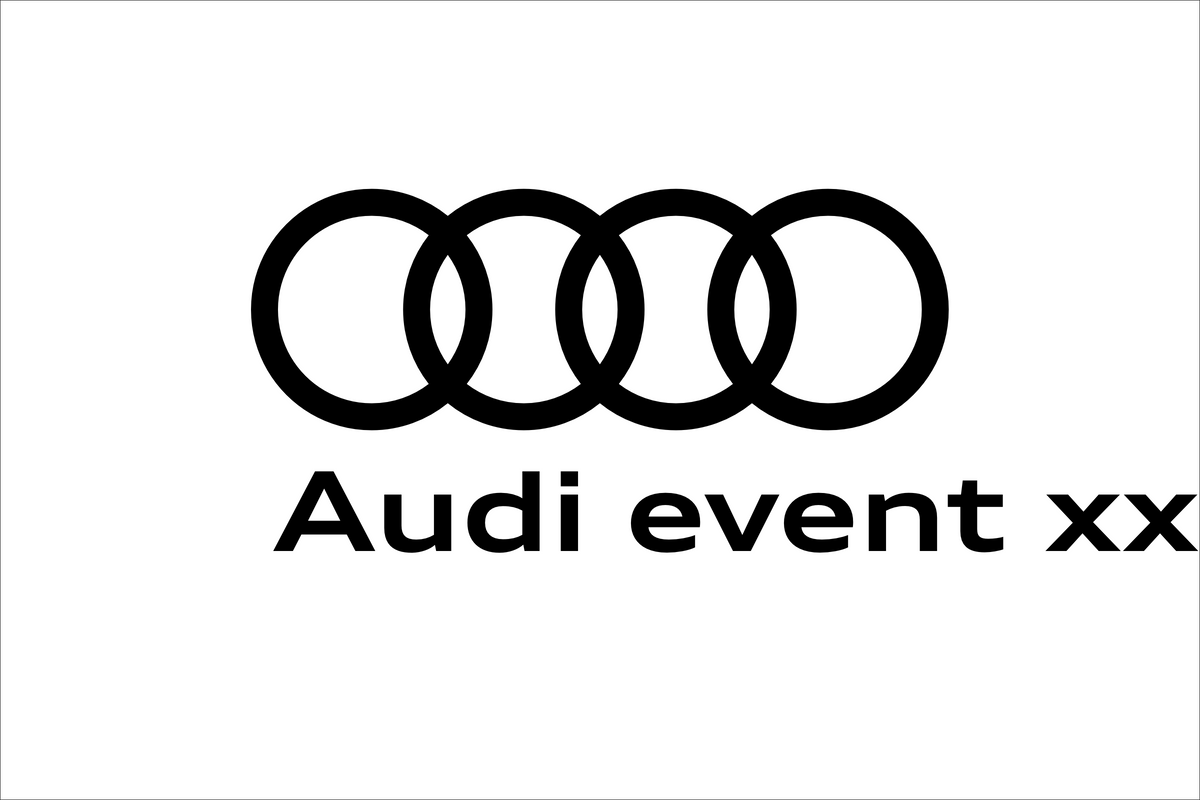
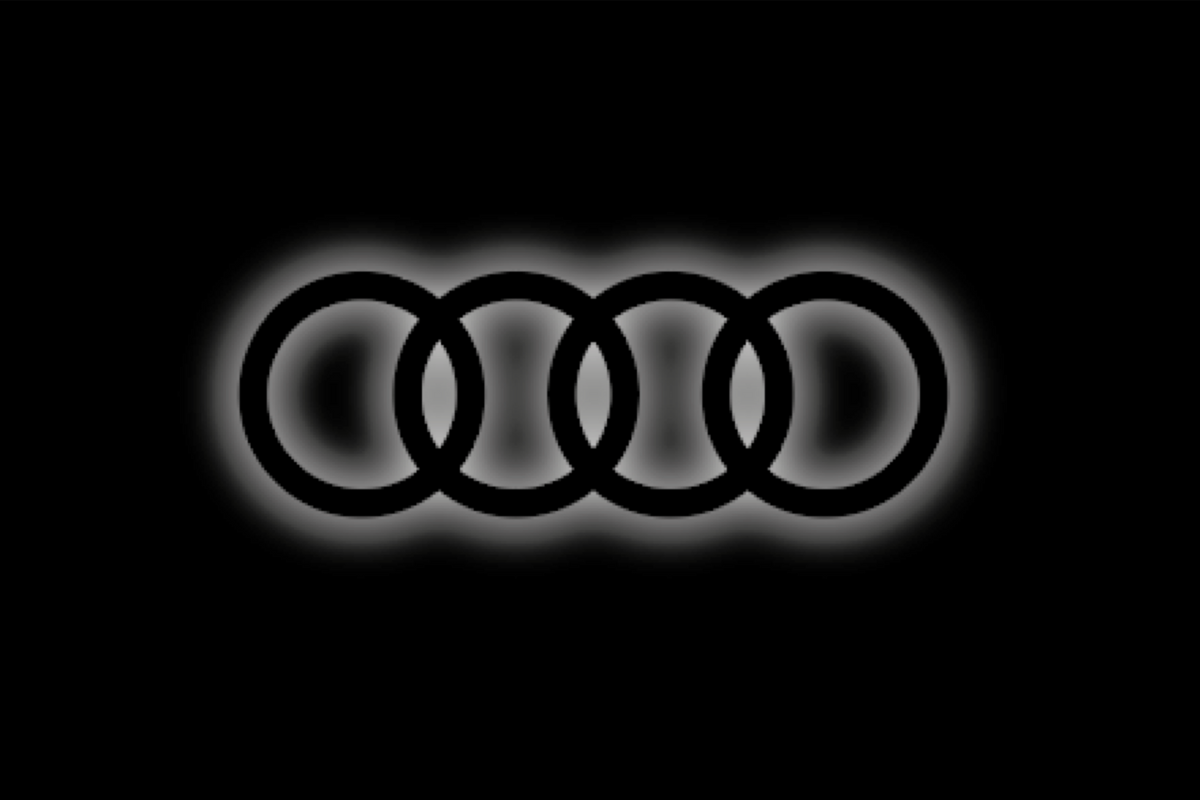
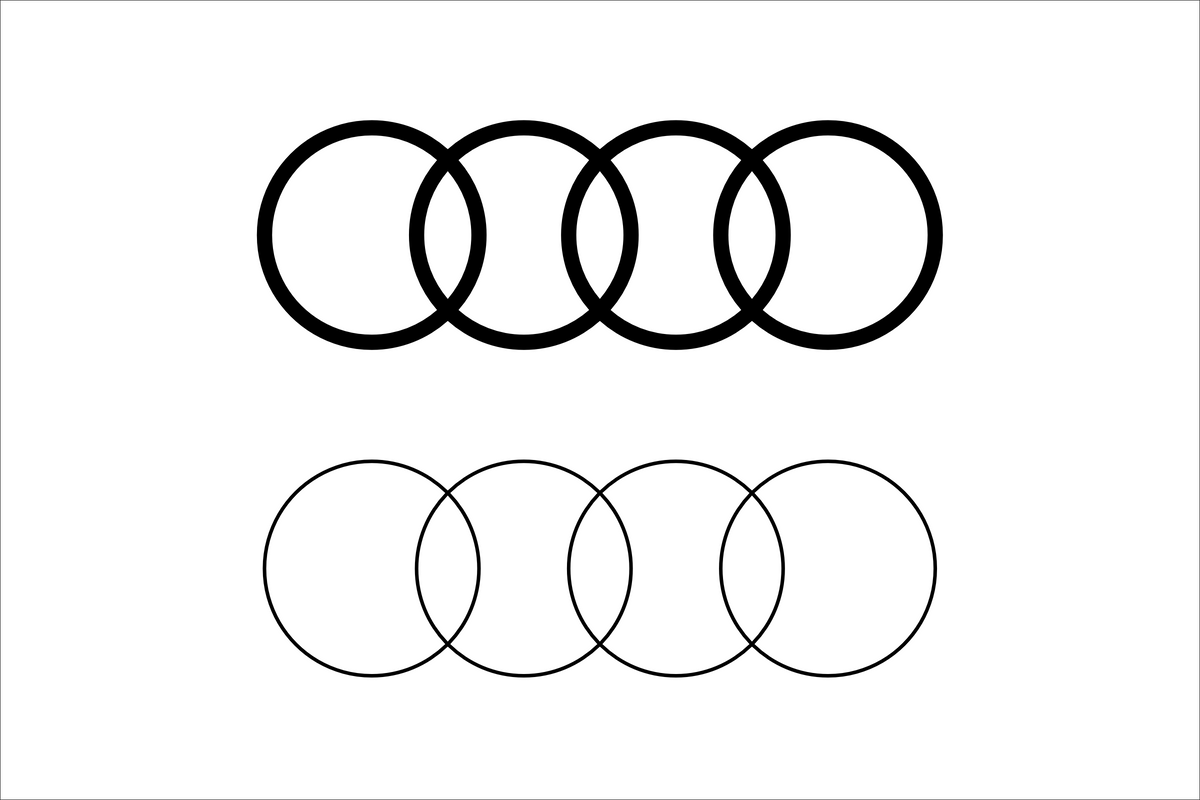
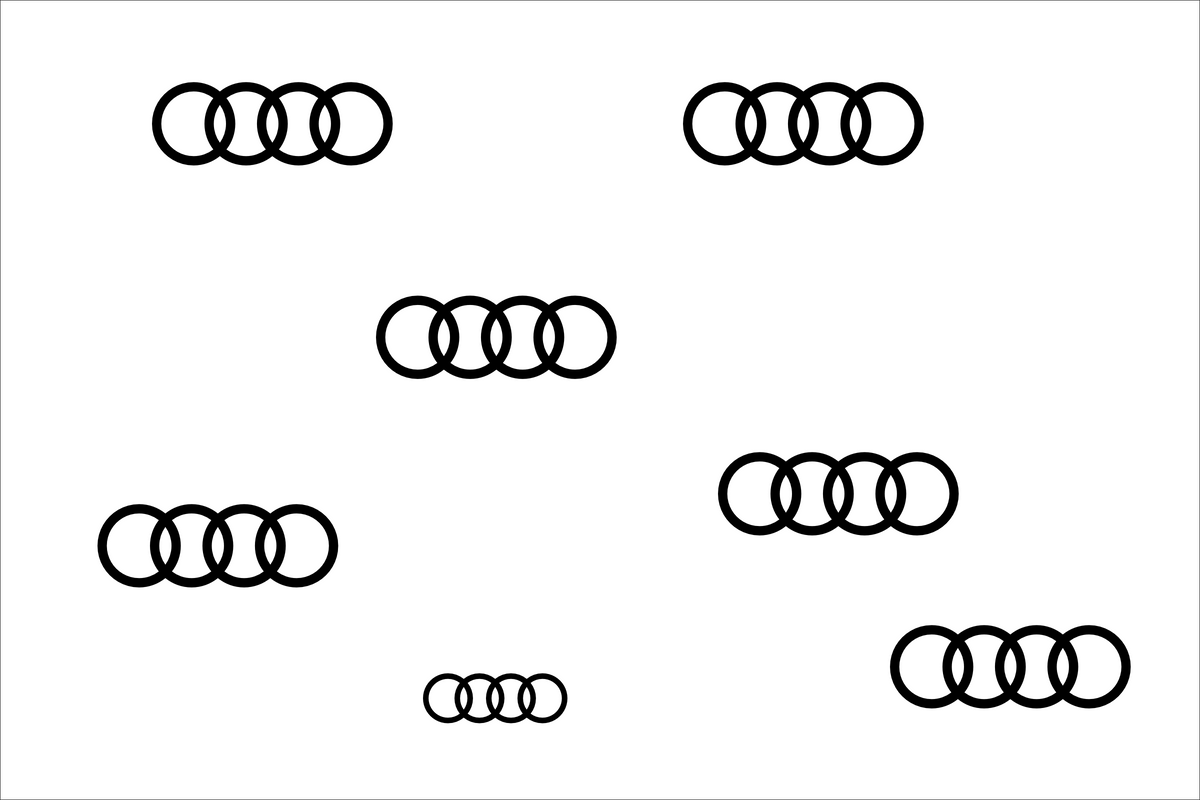
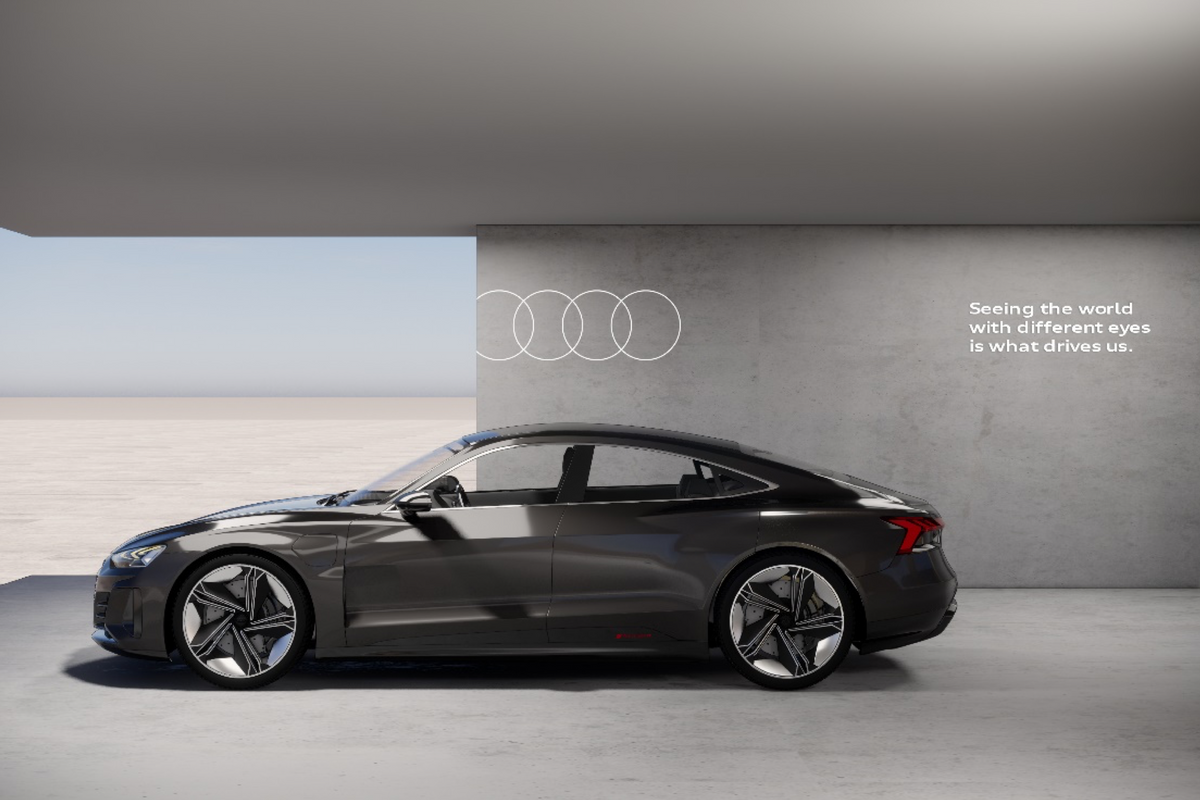
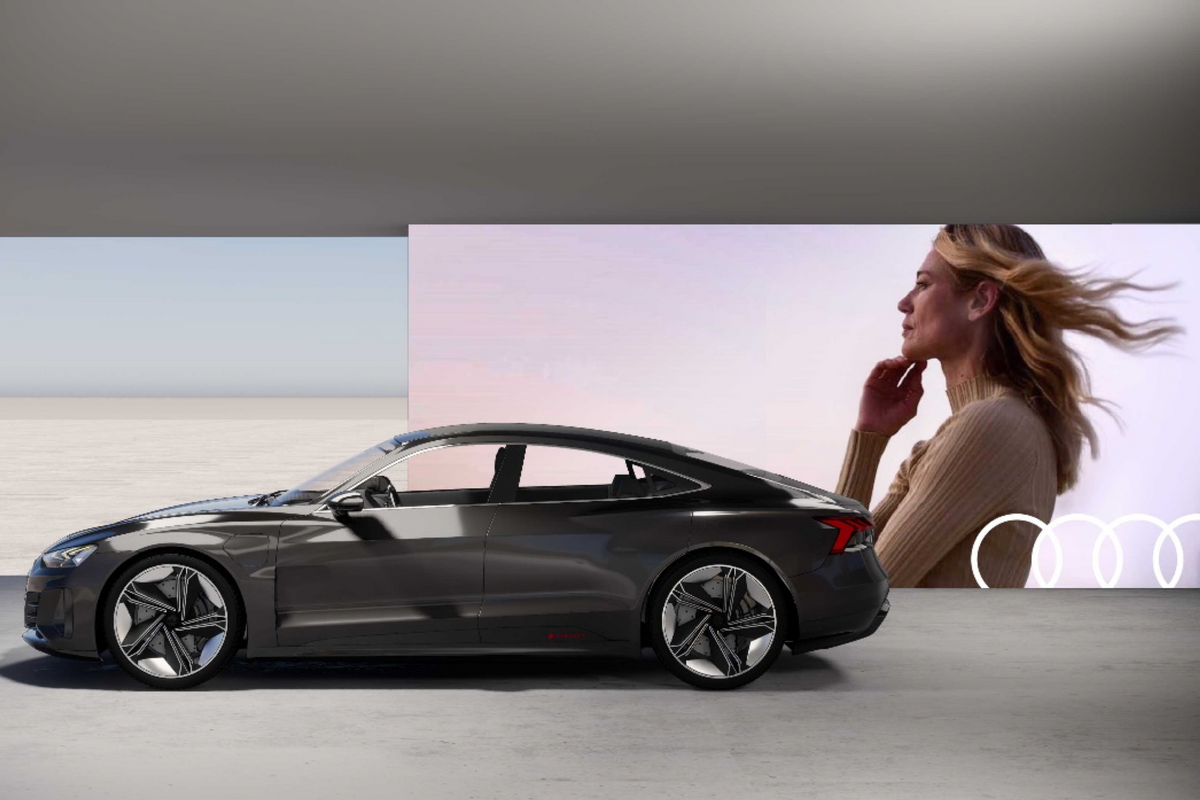
Media and graphics can play a decisive role as an atmospheric addition to rooms and spaces by influencing the mood and creating a visual dynamic.
Through targeted placement, media and graphics can guide the perception of rooms and spaces and promote a coherent aesthetic ambience. Graphics can evoke emotions and personalise spaces, while media such as projections or screens add an interactive dimension that can intensify the atmosphere.
It is important that these elements are selected and integrated with due care so as to ensure a harmonious and effective interior design.

Suspended, free standing in the room
Media surfaces can be freely suspended in the room. The ceiling connection is by way of round tubes, in which the additional cabling is also routed.
The maximum length of the suspension, measured from the upper edge of the media surface to the lower edge of the ceiling, is a max. of 2.00 metres.

Suspended, free standing in the room with floor connection
If the maximum suspension length of 2.00 m is exceeded or if cabling and static connection by way of the ceiling is not possible, an additional floor connection must be provided.
Ceiling and floor connections are always on the same axis and are made by way of round tubes.
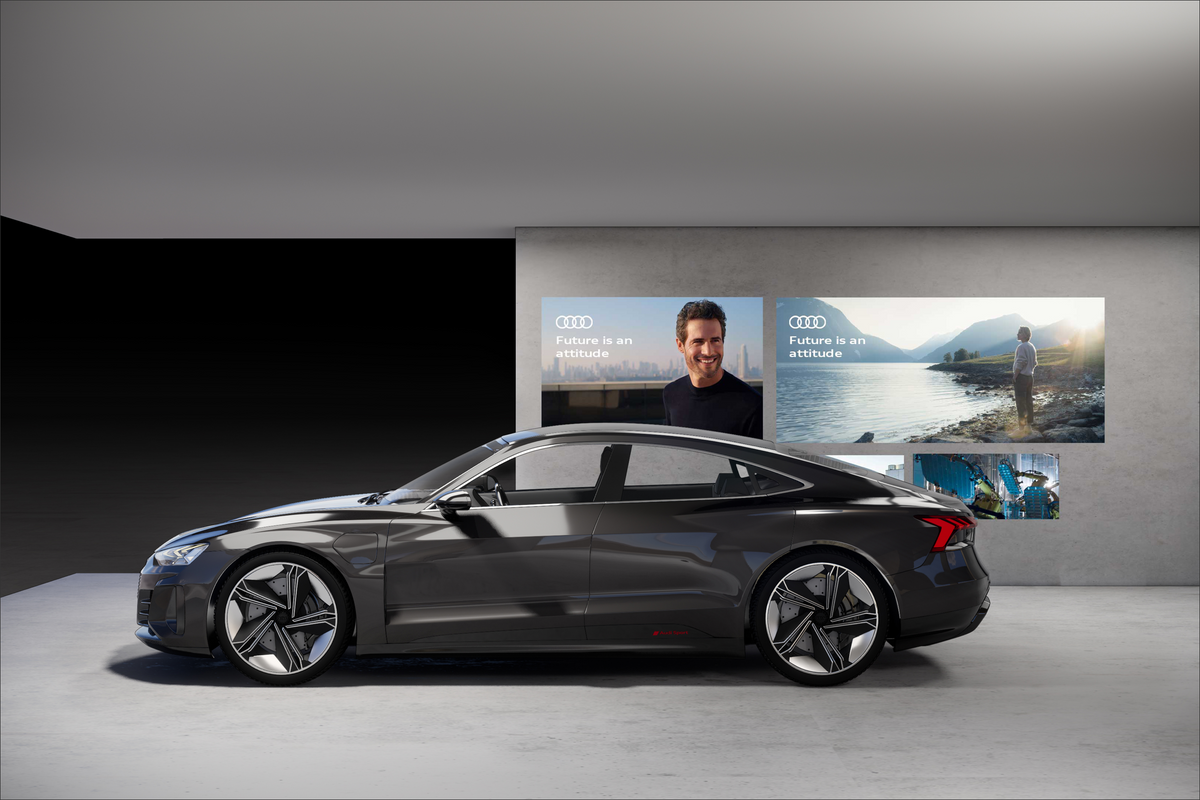


Before selecting the appropriate media space, it is recommended to check the content format in order to avoid unnecessary adjustments to the format or content.
2. Examples of possible combinations of different formats
A combination of different formats is possible. The media surfaces must always have the same height. The minimum distance between media surfaces is 15cm.
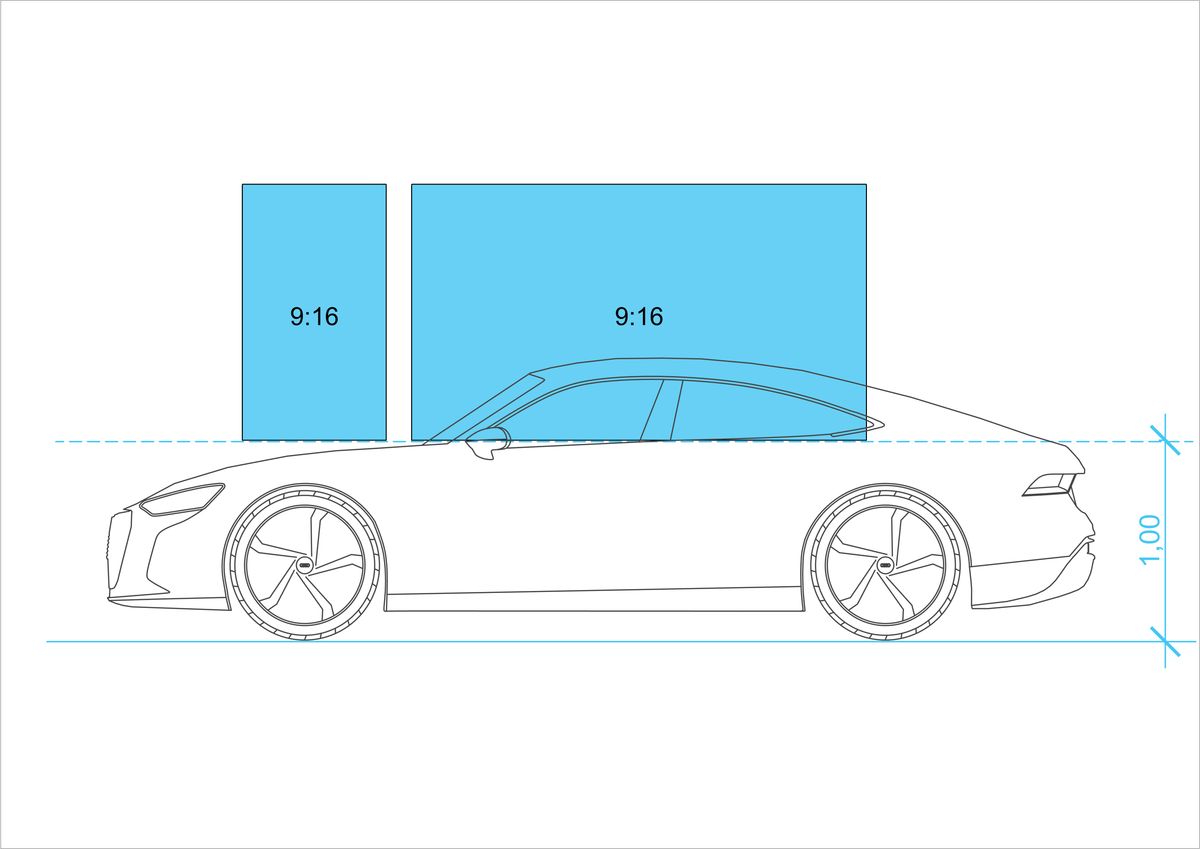
Combination of media surfaces (exemplary representation) in the format 9:16 and 16:9 and one object
For a combination of media surfaces with different formats and a vehicle or object (e.g. table, bar, counter, etc.), the standard mounting height is 1.00 m above the floor. The minimum distance between media surfaces is 15cm.
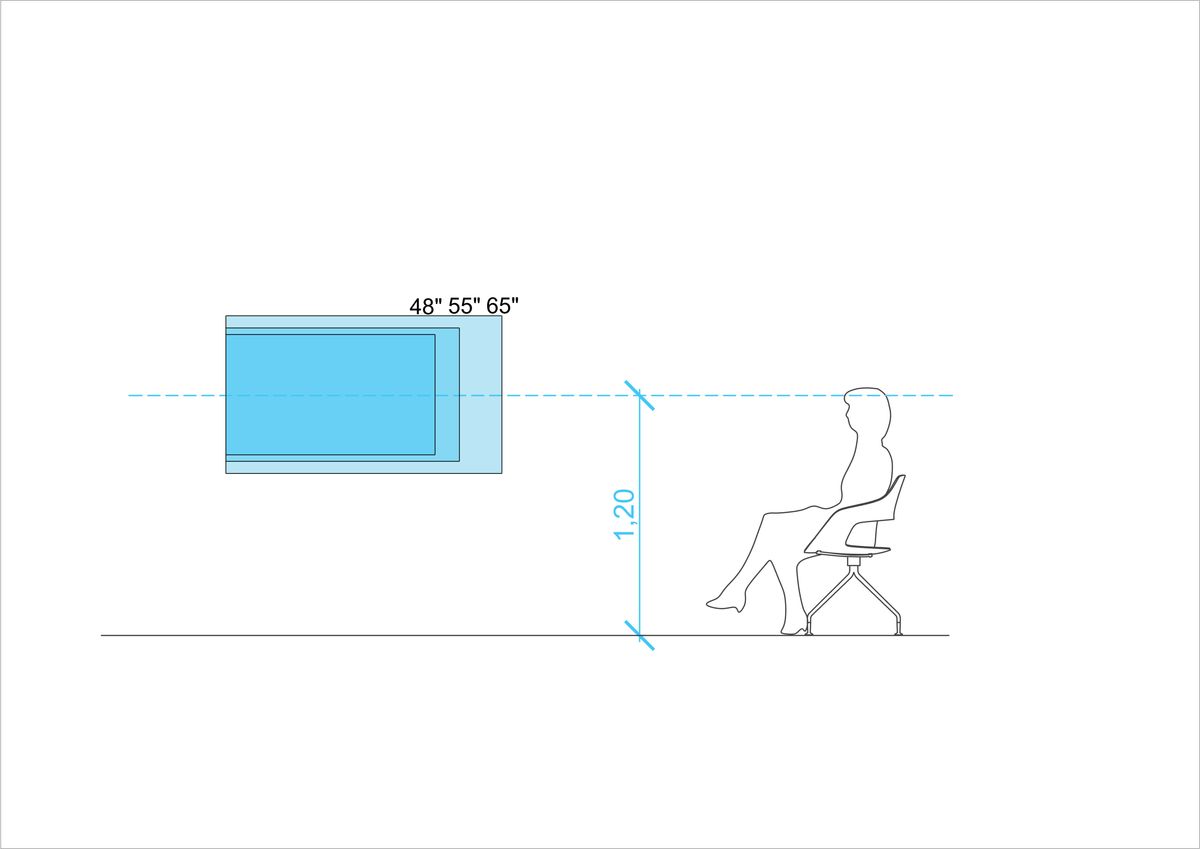
Positioning of media surfaces attuned to viewing from the perspective of a seated person (screens)
For media surfaces between 48" and 65", which are used e.g. for consultation situations and are mainly viewed while seated, the centre axis of the screen is 1.20m above the floor.
The viewing distance is at least 1.5 times the screen diagonal.
The visible edges of media surfaces are formed by a 4mm wide, matt black metal frame, painted in RAL 9005.
The visible suspension elements consist of two round metal tubes, also painted matt black in RAL 9005.
The diameter of the round tubes decreases in line with the decreasing size of the media area. Possible suspensions of media surfaces must be assessed and examined in terms of static safety. If visible suspension is not sufficient for static safety and structural reasons, additional concealed wall mounting is required.
.png?imwidth=1200)
Maximum and minimum length of visible suspensions
(Exemplary media surface 16:9, width 4212cm, round tube Ø 75mm)
The maximum length of visible suspensions is 3/5 and the minimum length is 1/5 of the total height of the media surface. If this value is exceeded or undercut, wall mounting without visible suspension should be opted for.
When suspending media surfaces free standing in the room, the maximum length of the suspension is 2 metres, measured from the upper edge of the media surface to the lower edge of the ceiling. If the maximum length of the suspension exceeds 2 metres, an additional floor connection using round tubes is required.

Do not exceed the maximum length of visible suspension of media surfaces in front of a wall
If the maximum length of the visible suspension exceeds 3/5 of the total height of the media surface, wall mounting is the only option.
See dimensioning of visible suspensions of media surfaces (graphics, screens and LEDs)

Reduced, focused and clear
Spatially, focus should be placed on the overall composition of the imagery. Images should be well coordinated, clear, reduced and used sparingly. Vehicles are not shown at all or only in a cropped version, if they are already on display in the exhibition.
Motif selection is subject to our corporate design guidelines concerning visual language: Basics > Image style
Image motif portal:
find.content.audi
Wall graphics portal:
CI Portal > Dealer Facility
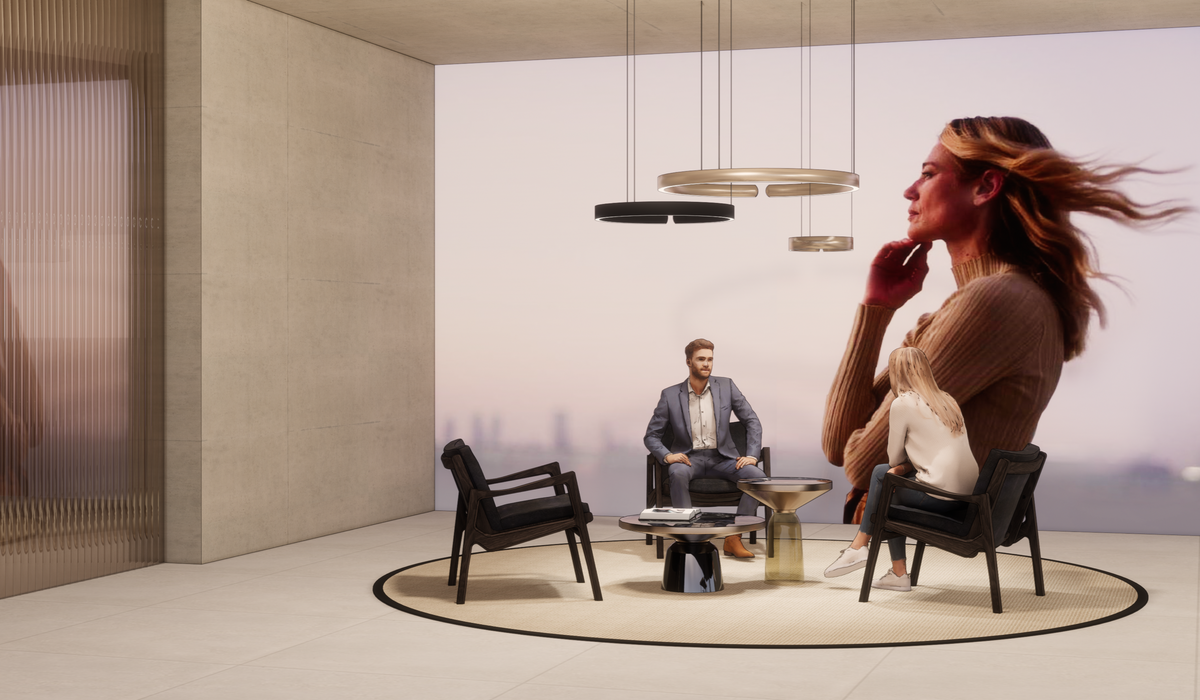
Atmospheric motifs
Brand Agenda Topics are supported by emotional imagery that match their respective Atmosphere.
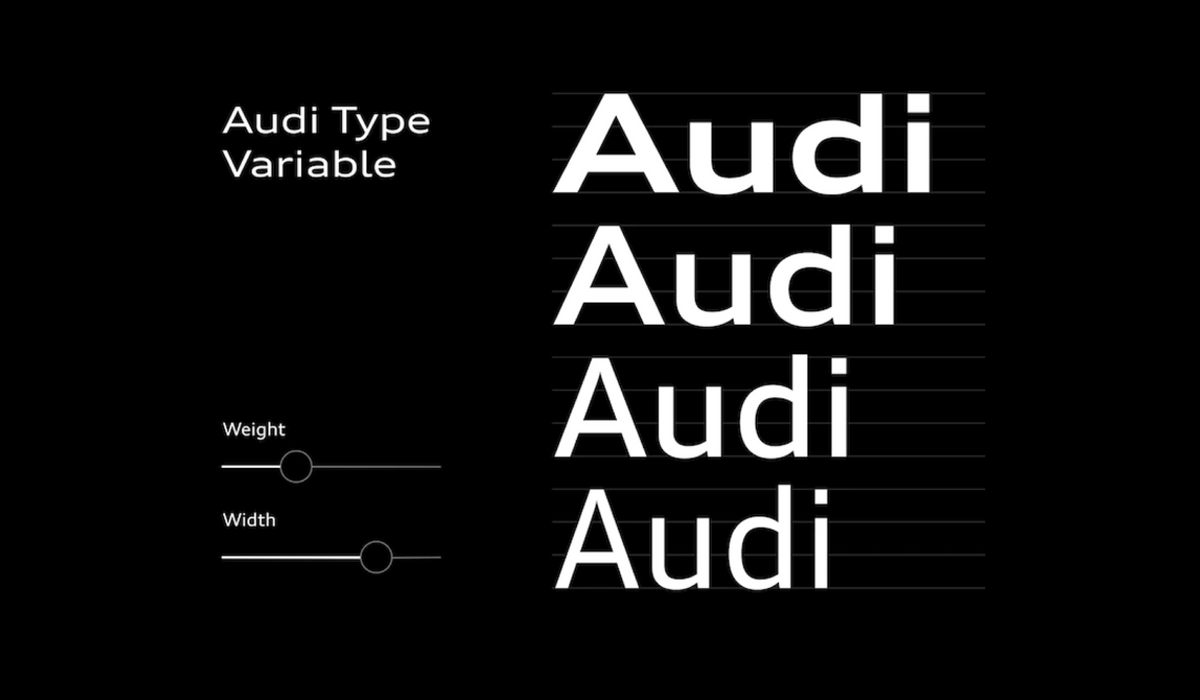
Further information
When designing, the brand elements (rings, brand claim, colours, typography, image style, layout structure and icons) are used as described in the Basics chapter.
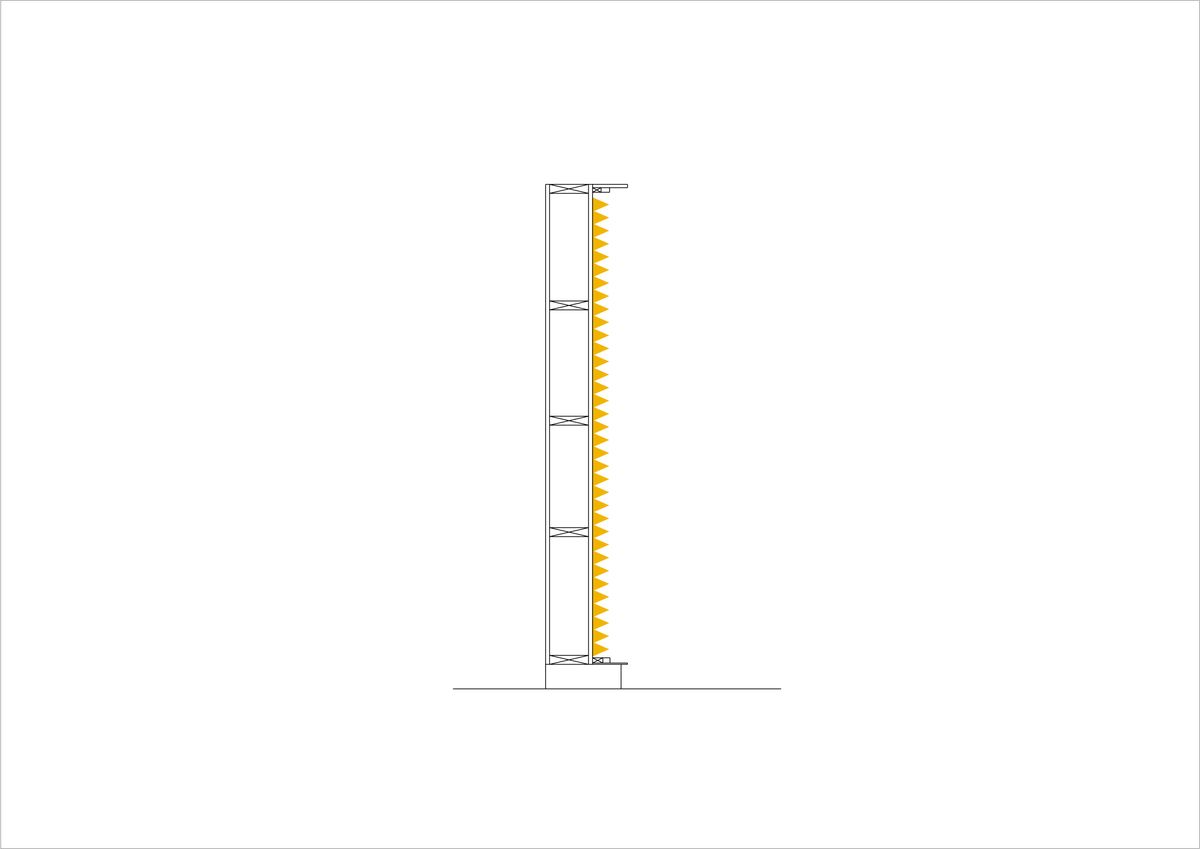
Illumination through full-surface backlighting
The illumination of graphics using full-surface backlighting is recommended in areas where there is high basic or background brightness or the graphics are used in direct interaction with LEDs.
The full-surface backlighting is characterised by the most intense, homogeneous light. Graphics surfaces in combination with LED surfaces must be backlit.
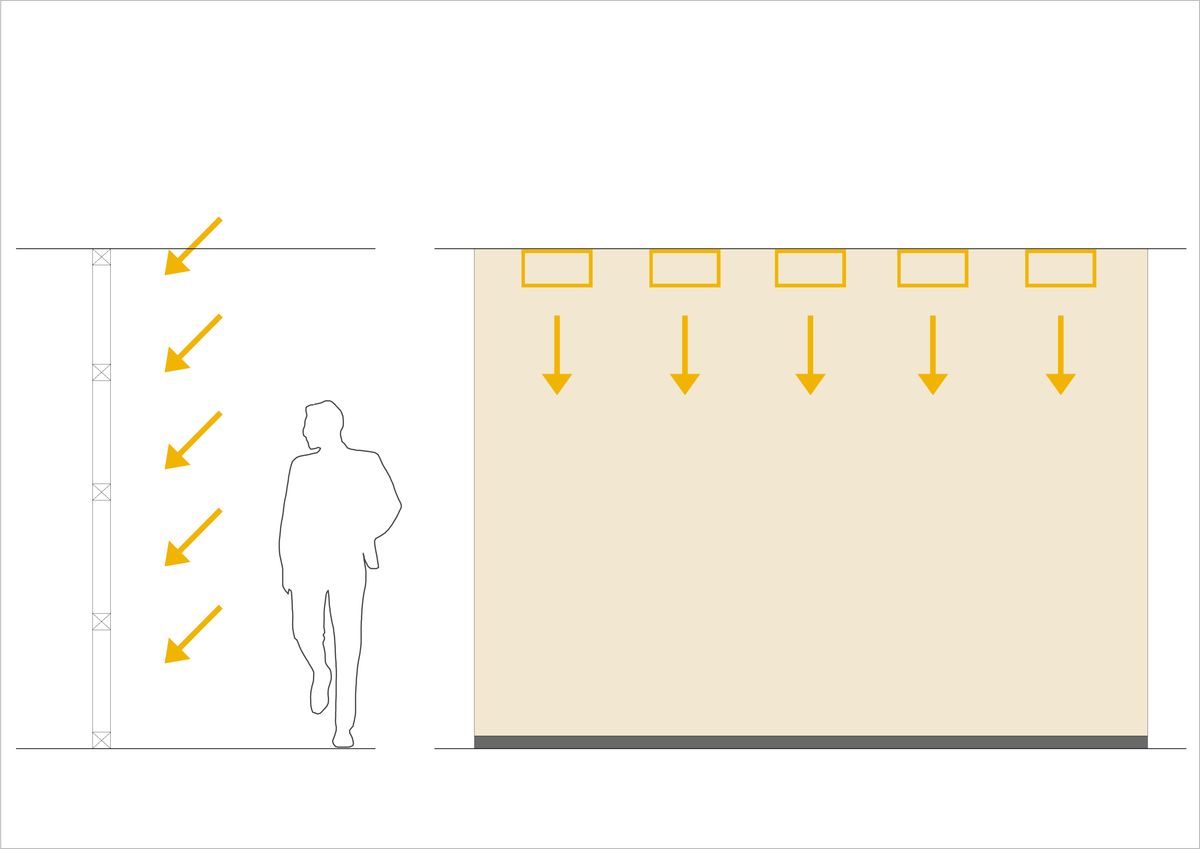
Incident light, up to 2.50m high
(Exemplary for full-surface media surfaces)
The following lighting properties are to be adhered to 4000k / measured value on the surface 4695lm / CRI >90 / dimmable
Pro
- More shallow installation depth compared to edge feed and backlighting
- Moderate costs
Contra
- Low plastic effect of the graphics
- Colours less brilliant
- Reflections are possible
- Parallel running Installation axis required for lights
- Visible lighting fixtures in front of the graphics
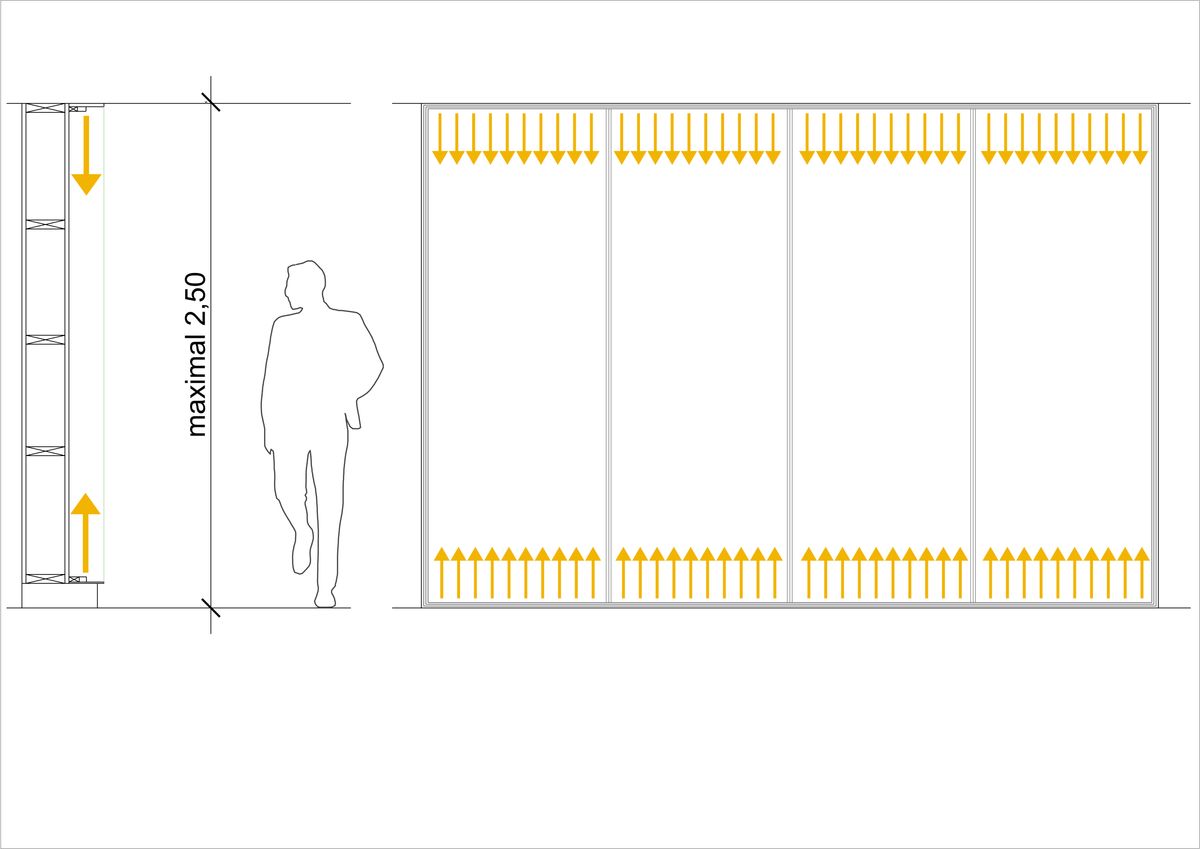
Edge feed, up to 2.50m high
(Exemplary for full-surface media surfaces)
Pro
- Good illumination up to a height of 2.50m
- Cost and energy efficient
- For graphics lower than 1.30m, more shallow installation depths of up to approx. 80mm are also possible
- Stronger effect of the motifs in contrast to incident light
Contra
As from a height of 2.50m, optimum, full-surface illumination of the graphics is no longer possible.
Reduced visual effect in bright exhibition areas.

Full-surface backlighting, mandatory from a height of 2.50 metres
(Exemplary for full-surface media surfaces)
Pro
- Installation depth only 80mm
- Homogeneous illumination
- Strong luminosity
- Unlimited overall height
Contra
- Higher operating costs/energy requirements
- Optimal, but most cost-intensive variant
»Inspire, excite, understand: our exhibits convey complex content simply and intuitively. We focus on a curated experience that activates all the senses.«
The simple communication of our content is top priority: We use spatial, technical and sensory tools to make the core of our message as emotionally tangible as possible.

Intuitive interaction
Ways in which the user can interact are presented easily and clearly. Here, the goal is to make the interaction for our customers so simple and positive that this experience becomes associated with the brand – creating a lasting connection. The core message must be clear immediately. Essential details appear in the body text or the interaction.
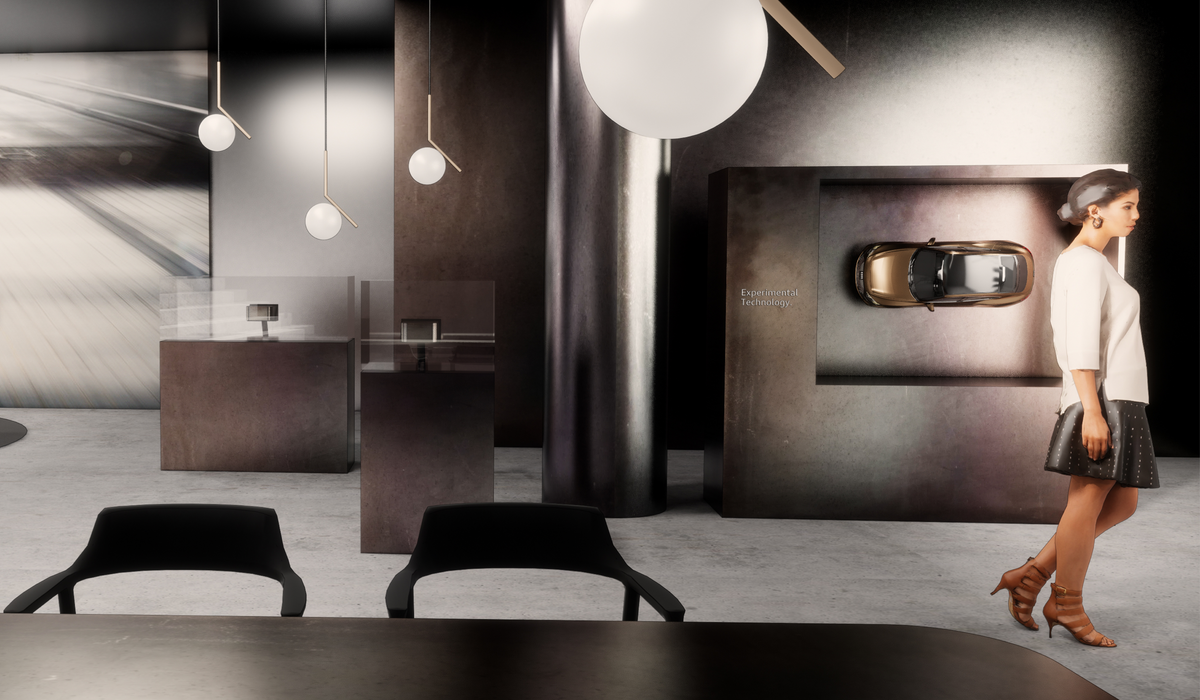
The exhibit corpus is designed according to our reduced construction approach and is subject to the guidelines on Design Language.
Materials are adapted to the respective design of the room. Highlights in the materials are used consciously, and additional materials are avoided where possible.
Detailed descriptions of the Audi materials are available for download in the Form chapter.
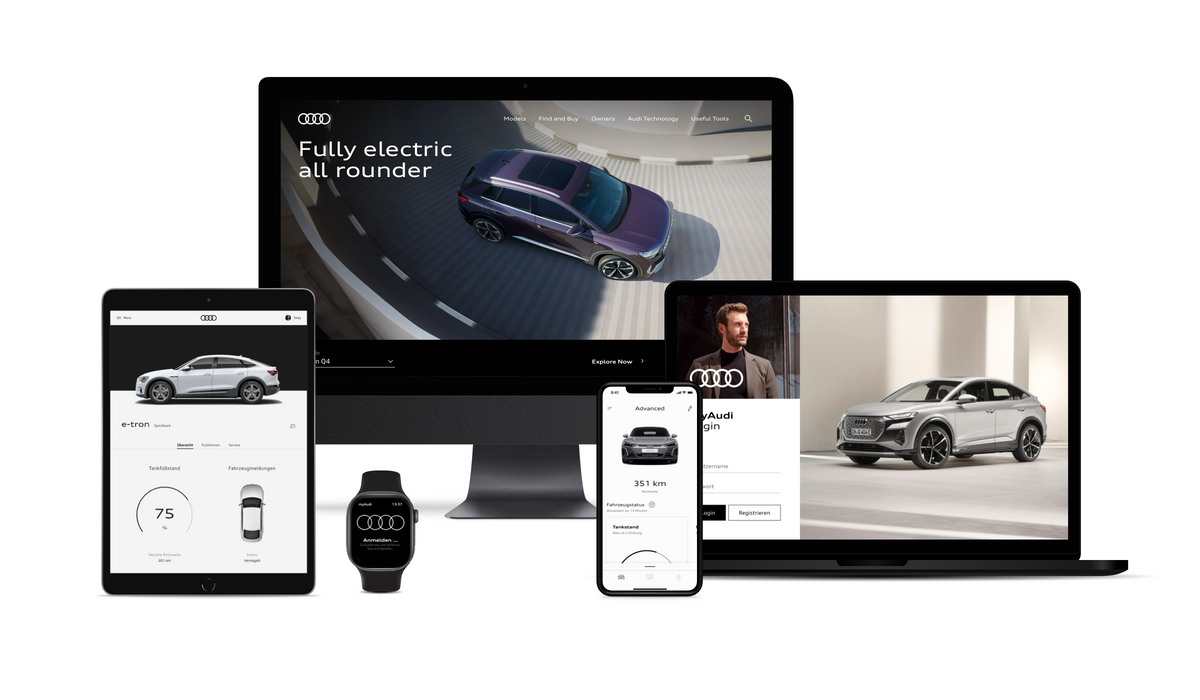
If screens are used for interaction, they are subject to our UI design guidelines: User Interface > UI Introduction
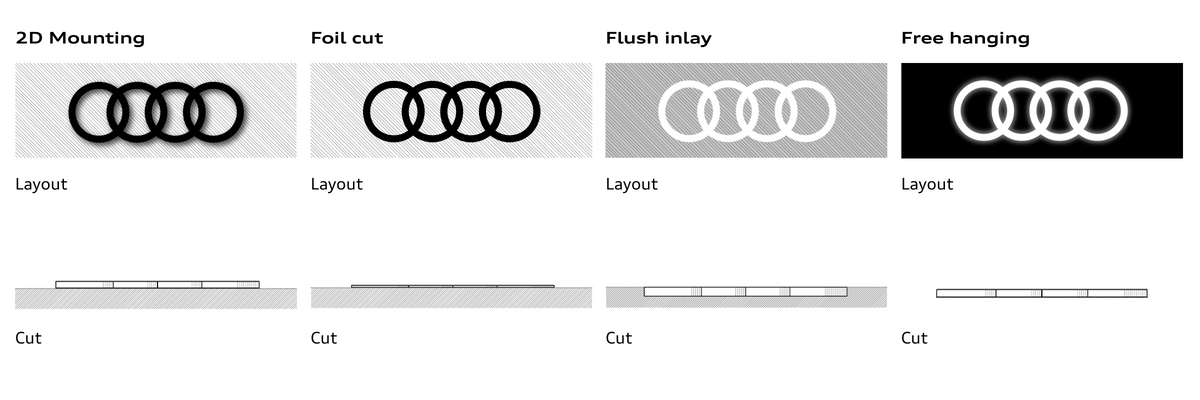

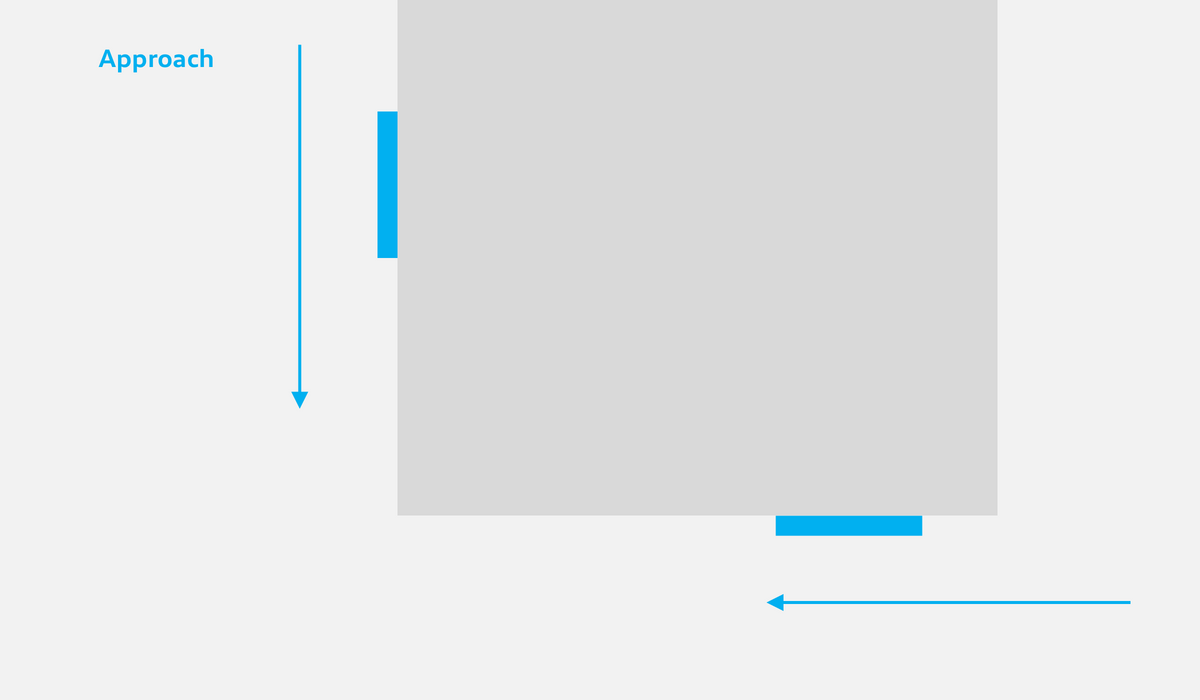
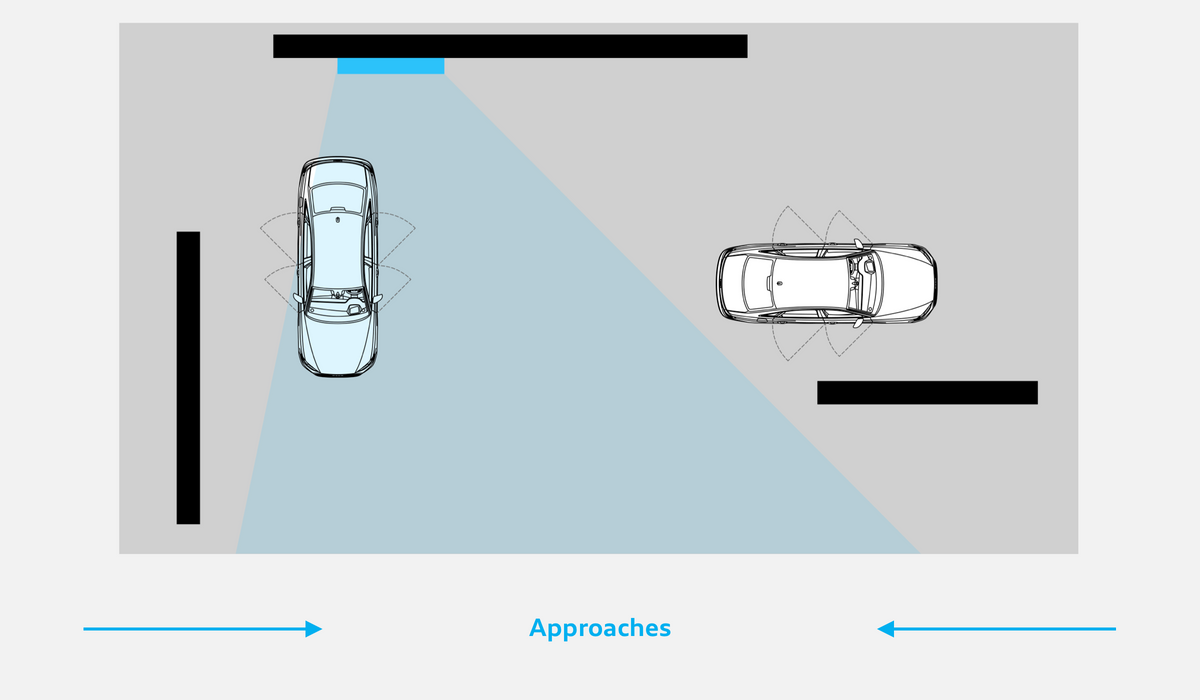
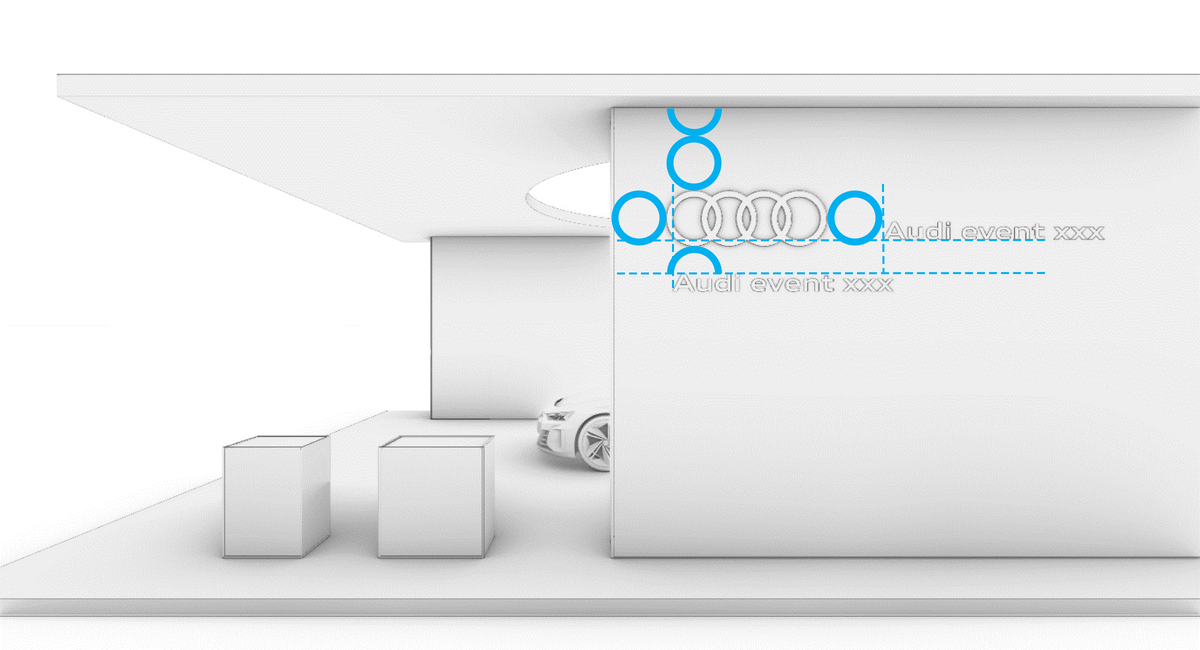
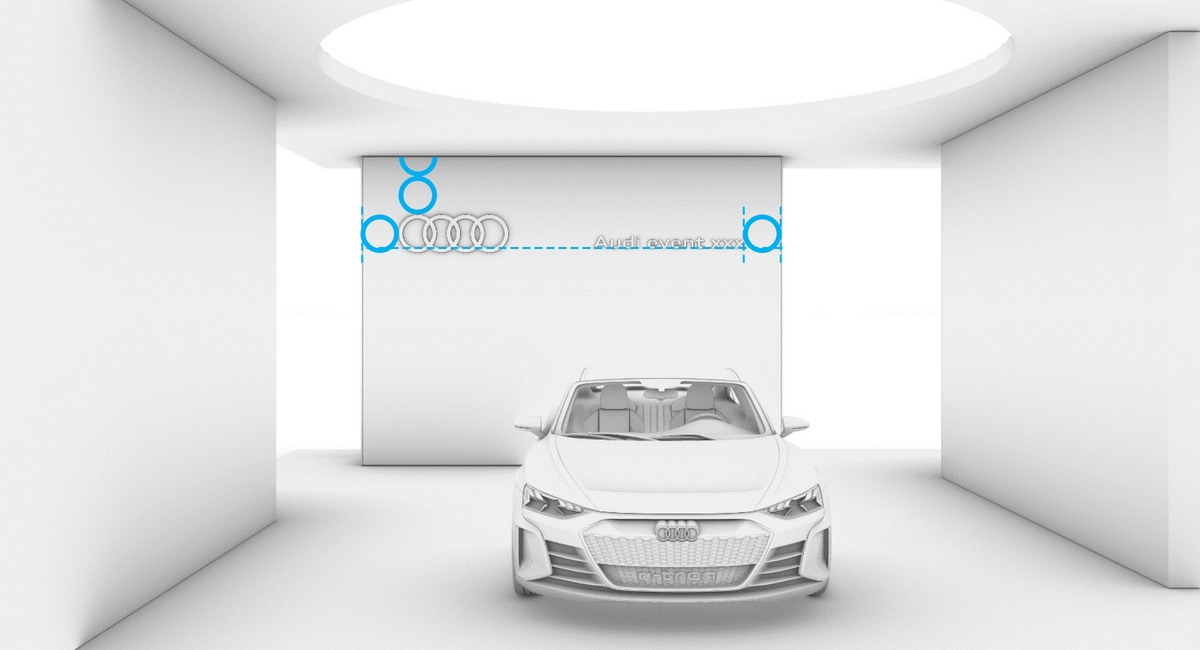
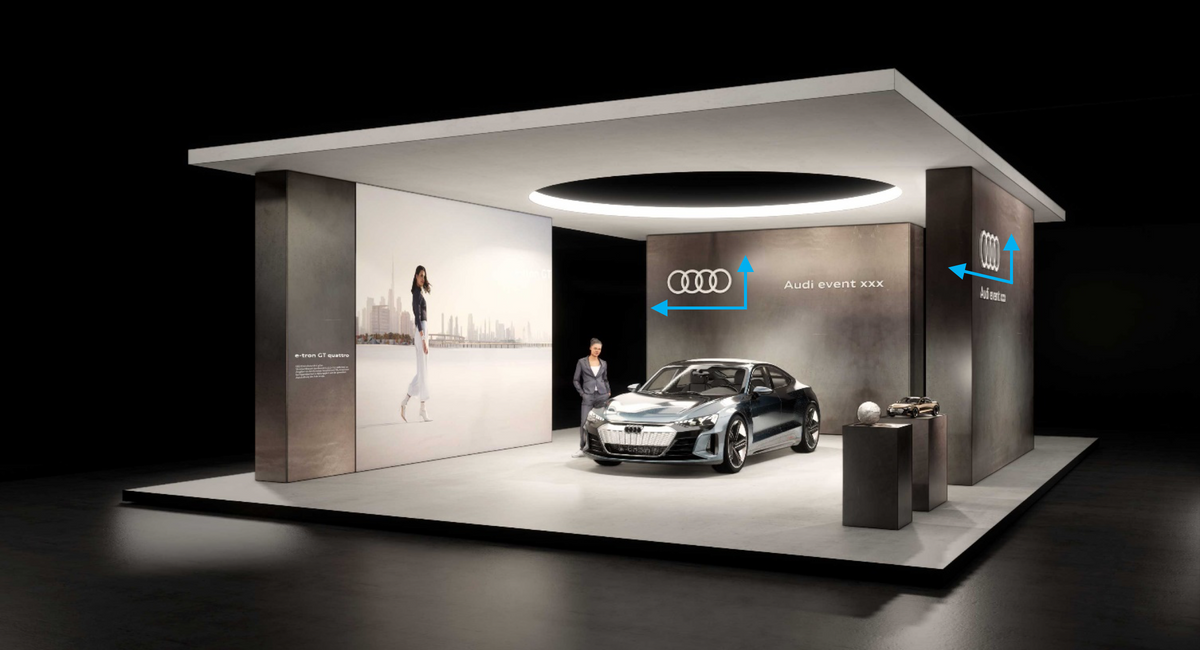

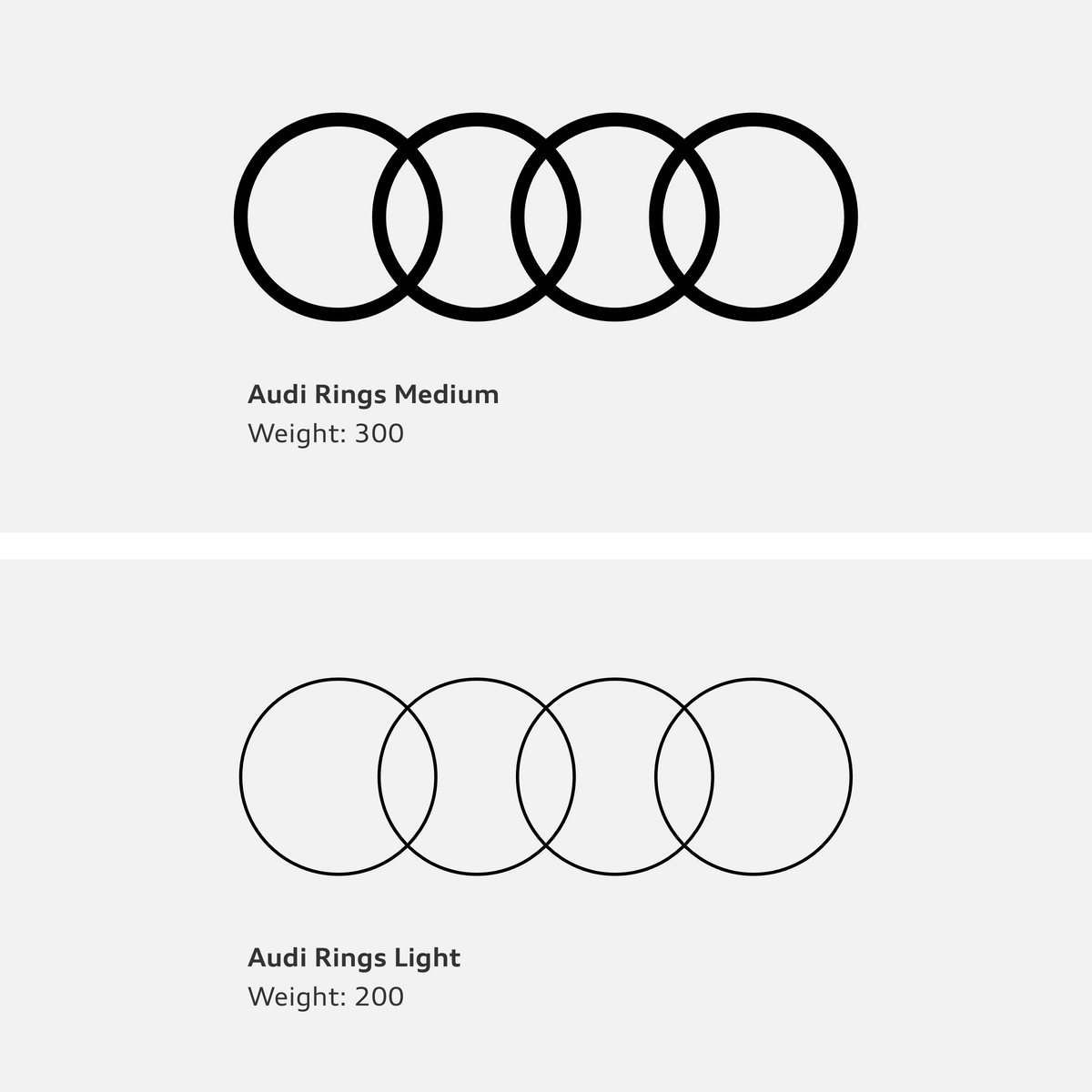

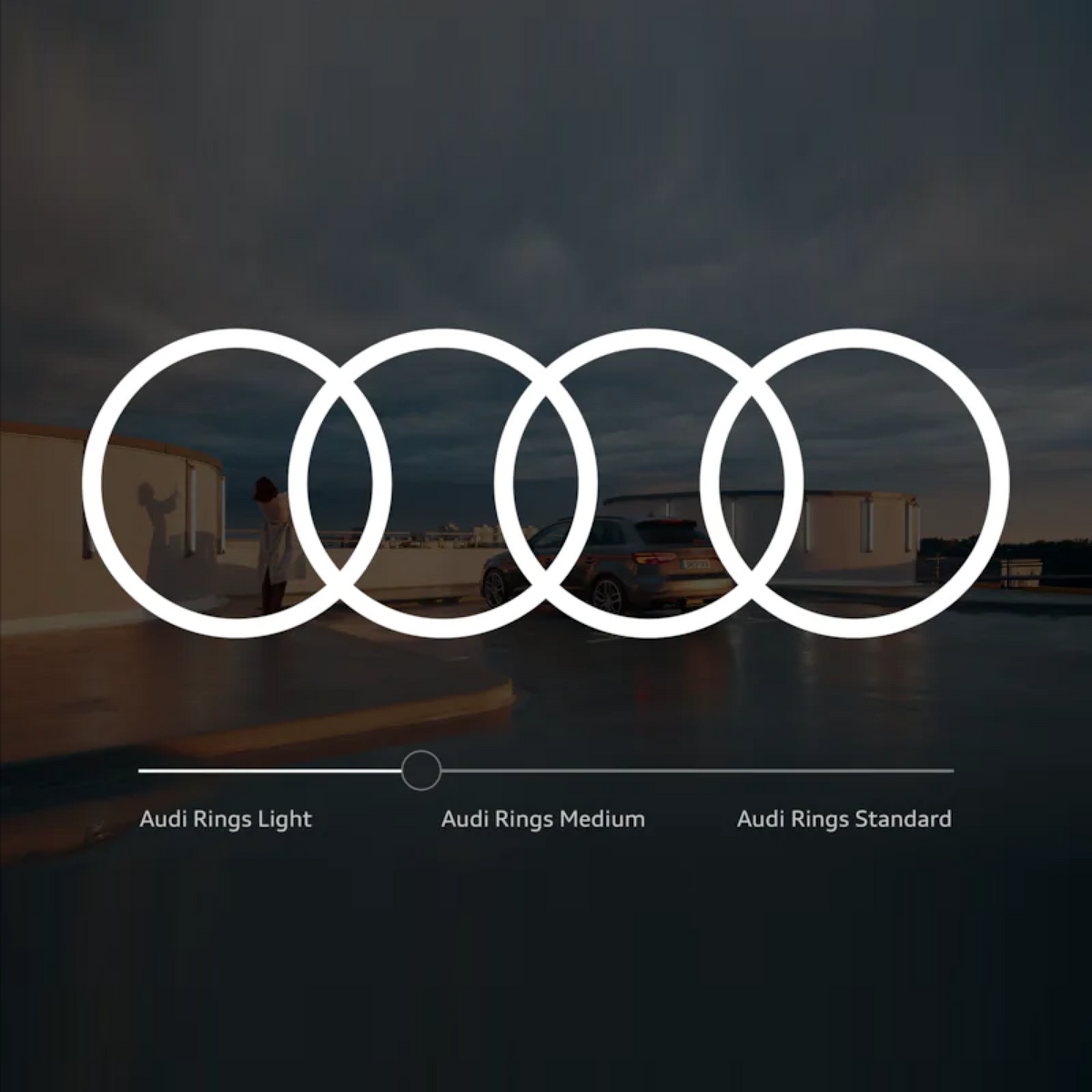

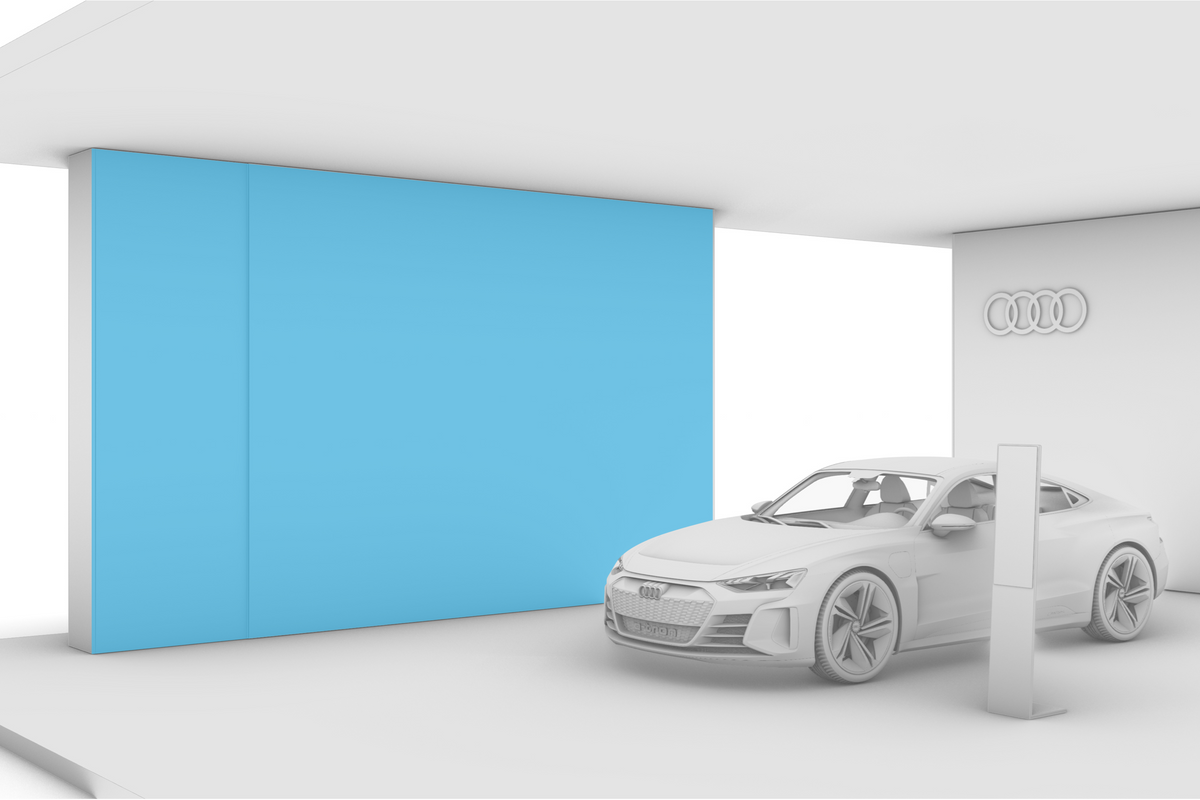

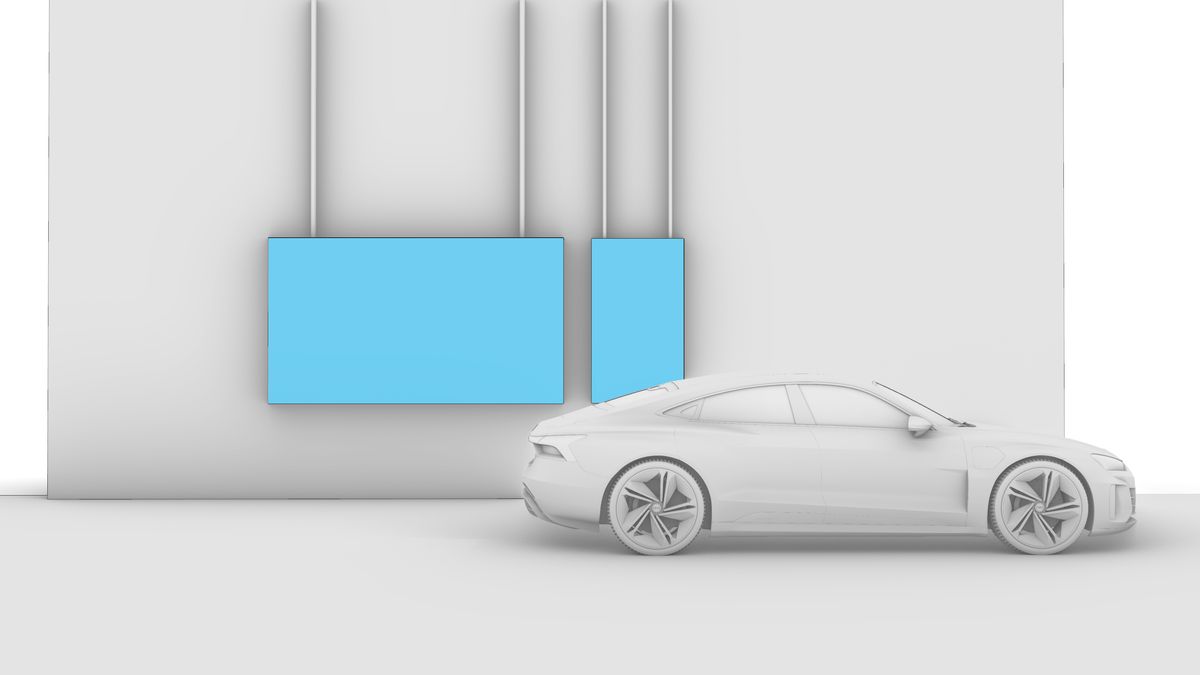
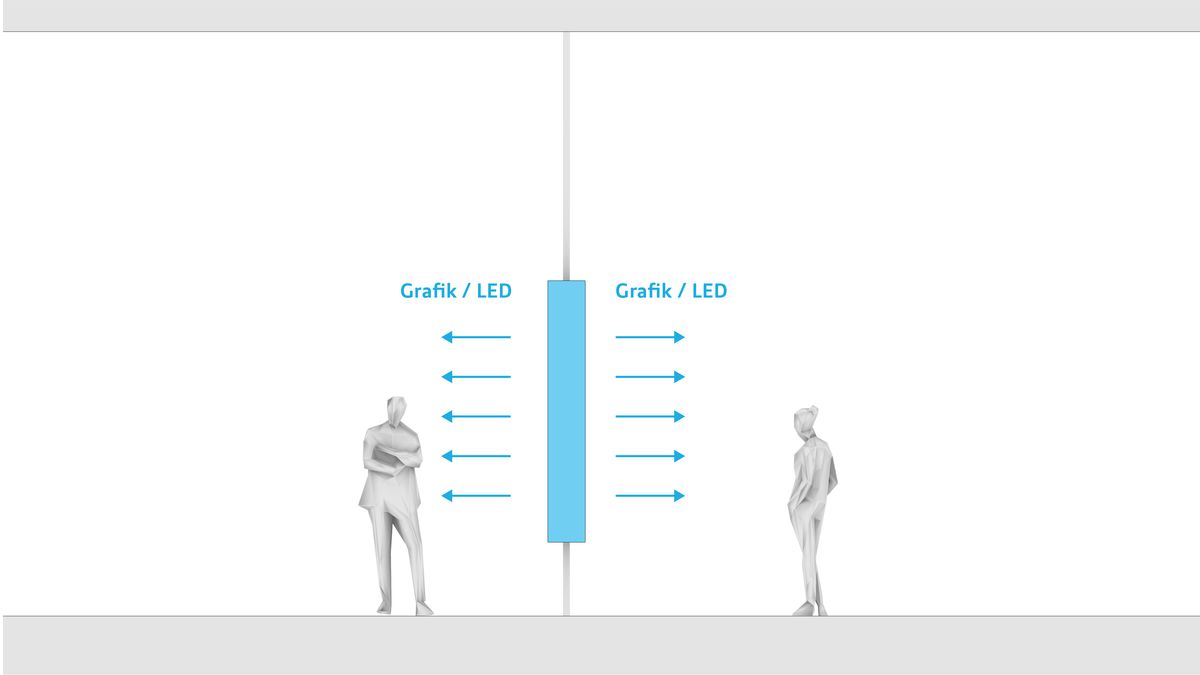
.png?imwidth=1200)
.png?imwidth=1200)

.png?imwidth=1200)
.png?imwidth=1200)

.png?imwidth=1200)
.png?imwidth=1200)
.png?imwidth=1200)
